July 23, 2017
Martha O'Kennon
Another hot and humid week. I poke my head outdoors for an hour or hour and a half each day, each footstep inspired by something I have just seen for the first time or for the first time in a year. Then I have the real fun! What could be more fun than seeing the creatures on the hoof doing what they were meant to be doing? But sometimes after the cropping and adjusting light and contrast I play the original picture like a microfiche reader and sometimes find something ELSE that I had missed completely. This happens a lot when I'm scanning the tadpole pictures and suddenly find something that I should have known existed. You'll see some examples today. But first, some bits of color. The blue in the Balloon Flowers is such a wonderful soothing blue. Just last week I was bemoaning the loss of Rudbeckia relatives in the yard due to the swell in European escargots, and just this week I had to decide whether to tell you that I found this Black-eyed Susan growing near the edge of the former "flower bed", where I set my chair back into the former flowers! By the time I saw it, it had already started budding and now it is actually boldly blooming. A number of empty escargot shells were to be found not two or three feet from the plant! It is not yet time to publish a website on the actual potential prey list for them. Far in the back yard there is a huge hosta plant that now has expanded its footprint almost to a big maple tree stump. But despite its somewhat unpromising environment, in the past 25 years or so it has expanded its flower power to outshine anything else in the shade back there!
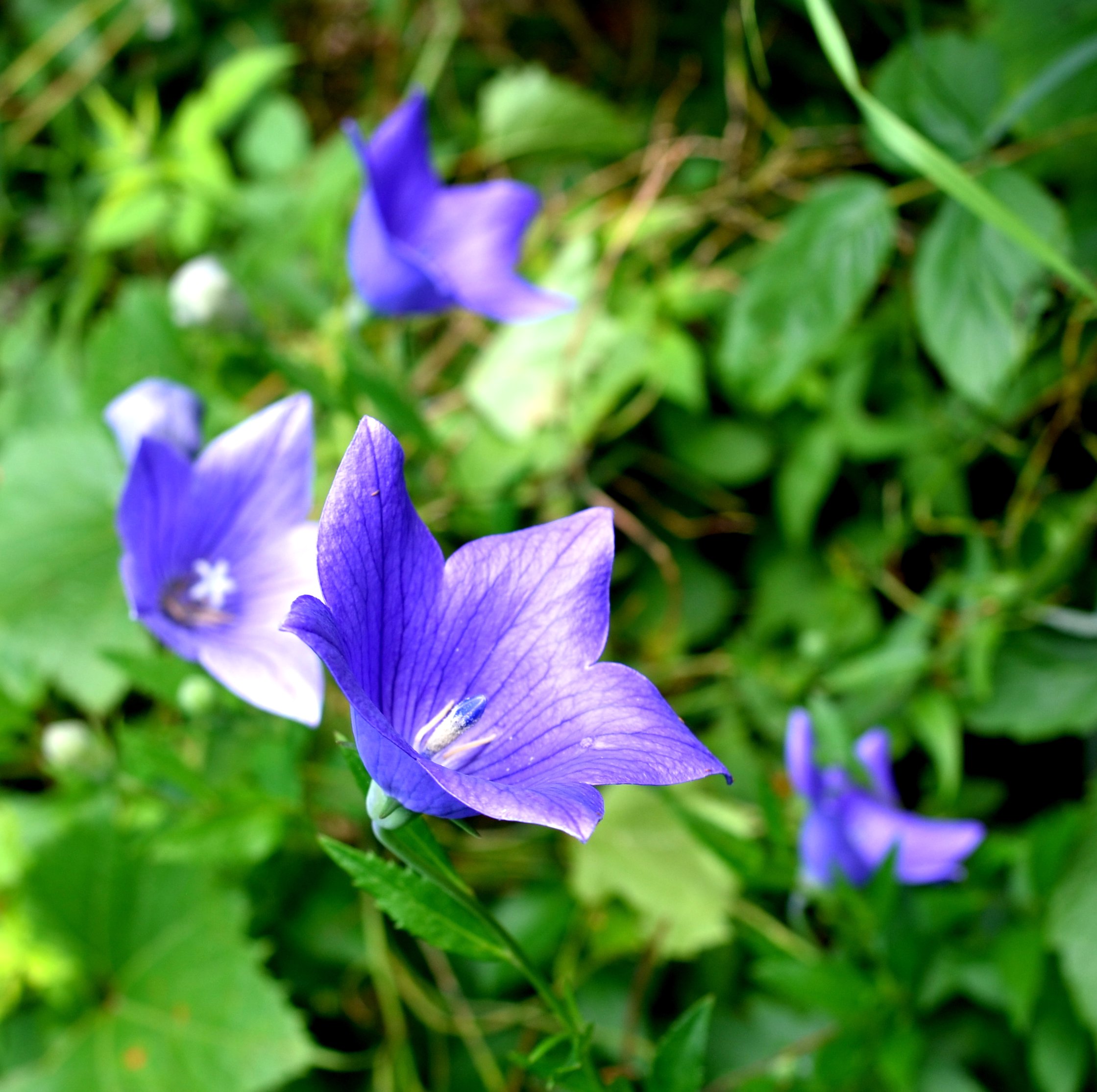
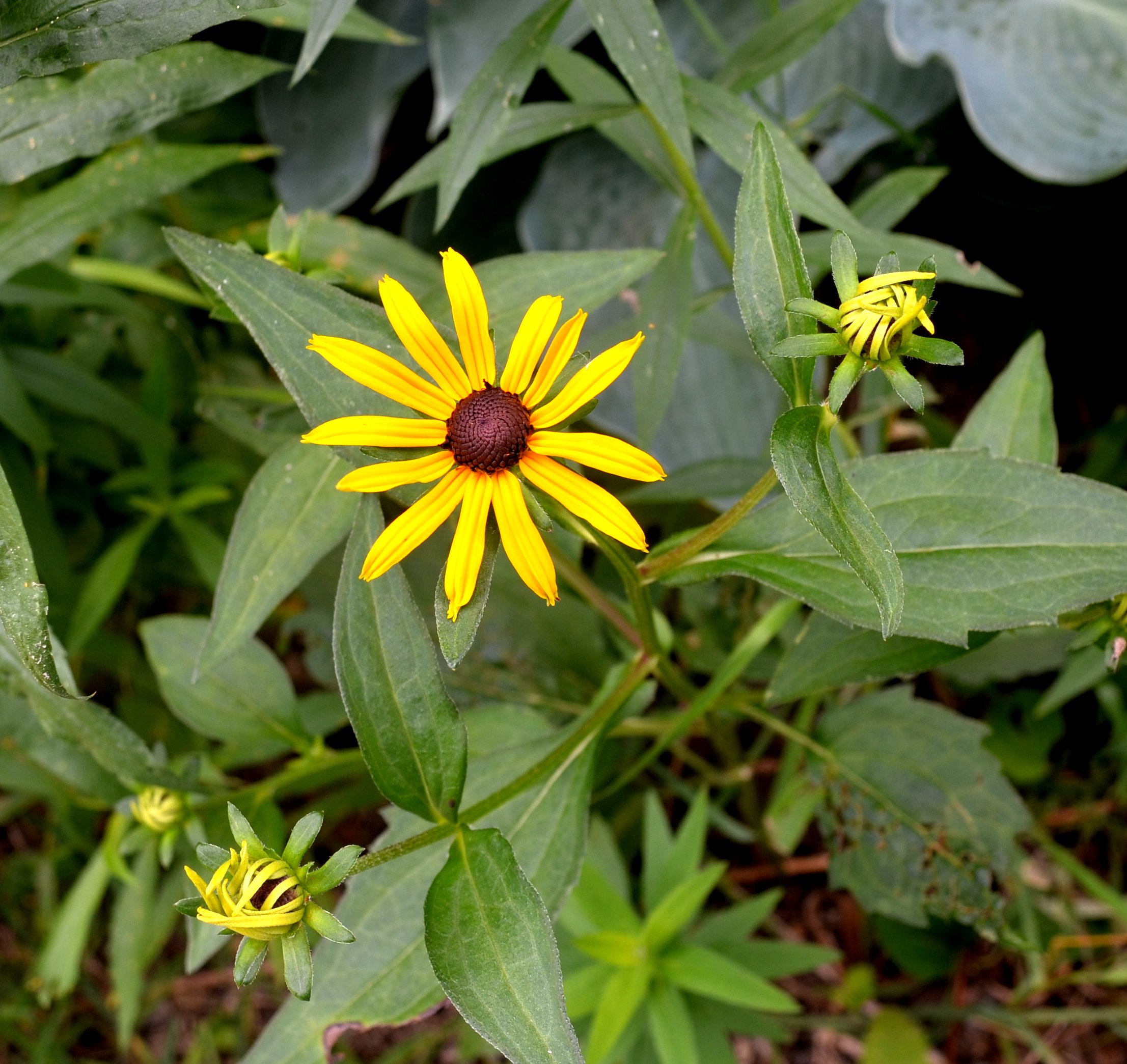
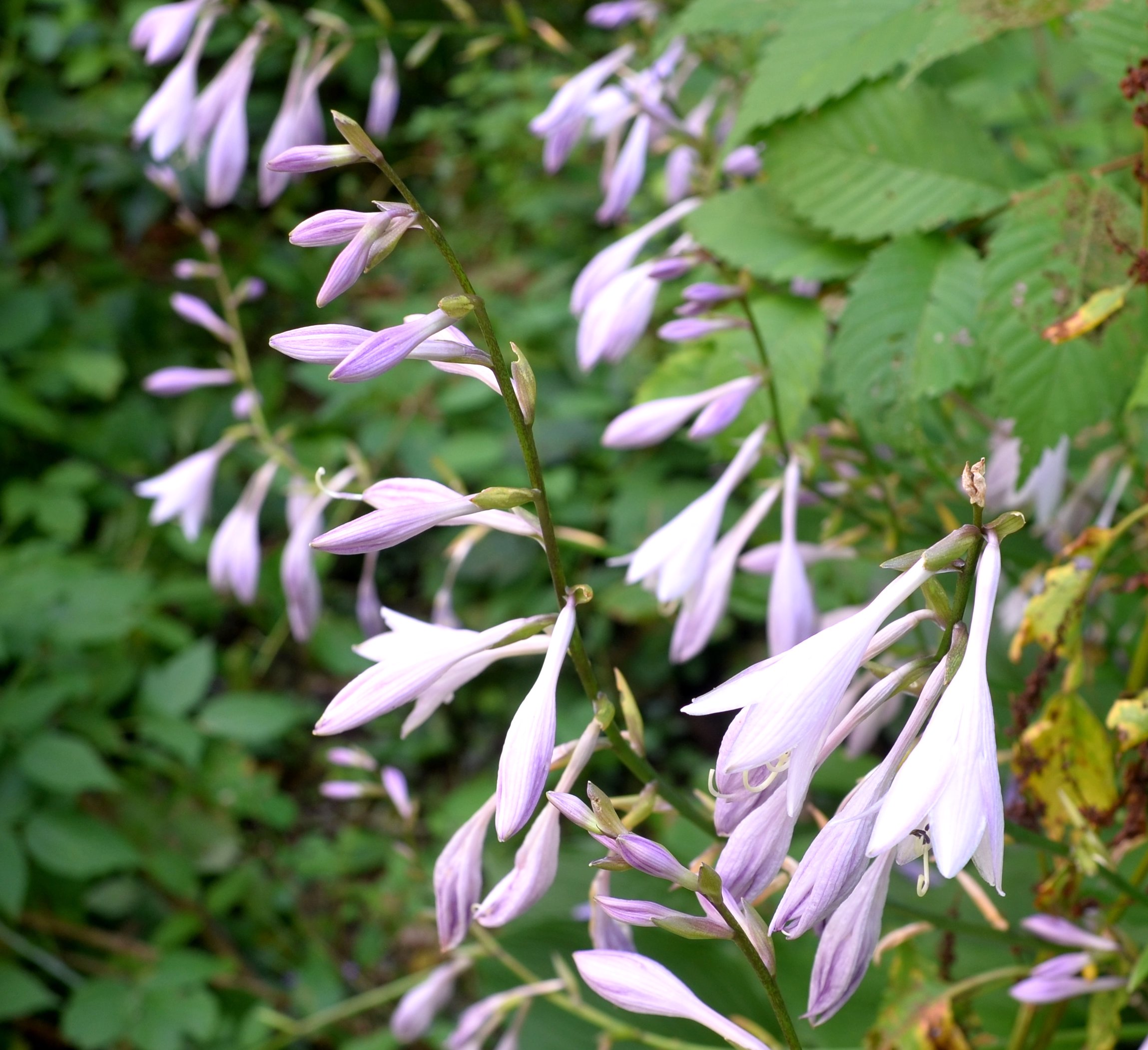
Remember that there is information in the name of the file for each image. You can see it by mousing over the image - look at the lower left of the screen. Or you can click on the image to get to the (usually) larger image. Then the info is displayed in the address line above. Sometimes the second click will actually display a different view of the original image.
Let's see, it seems that I told you last week about discovering the lacewing in a tiny colony of aphids (which I can't find now for all the searching in the world, or at least this part of it). Here is a rerun of that f.
It's a good picture to practise clicking on once, then twice to see some sequential expansions of the original. And, this time another classical predator of aphids, an Asian Lady Beetle, had taken the place of the lacewing. Finally: shadows of a few aphids on a plant across the path from the first two. We'll be seeing more goldenrod soon now. Many plants have many spikes of flower buds already, and my marker is on this week to see the opening of a fair representation of goldenrod buds.

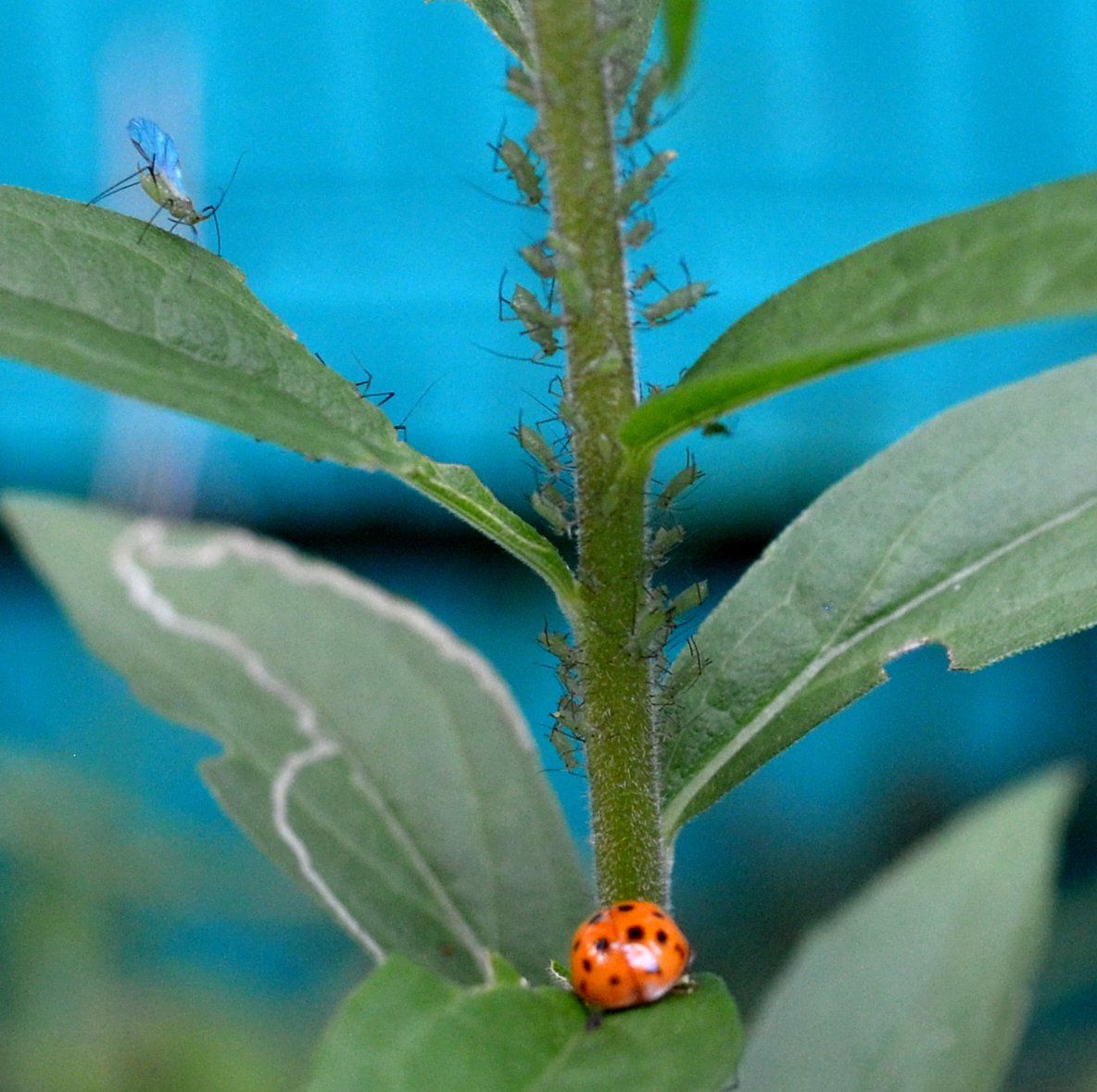
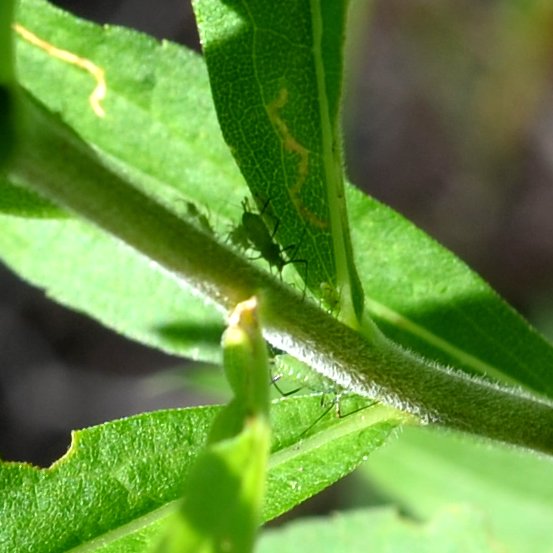 ,
,
Here's the barklouse we have been practising on all spring. And here is a little larger green sweat bee than we have been used to seeing up to now this year. It's hard to convince them to alight and not a) disappear into a flower's tube, or b) fly away apprehensively. You can see the look of caution on its face in image #3. Isn't that green?
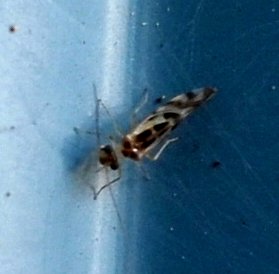
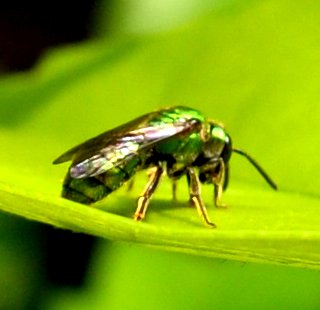
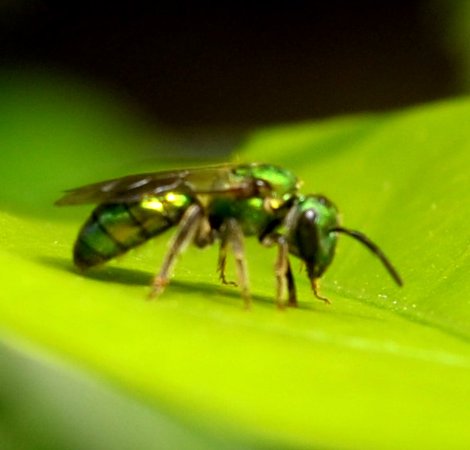
Not so many new bees this week! But that means we can go ahead to our friendly beetles. Is this the white-margined burrowing bug? I don't think so - it has pretty little white antennae. But it does look lady-like. But this 15-black-spots-on-white-bug, with its patterned collar, found by Kathleen this week IS a real Lady Beetle, as is this Asian Lady Beetle.
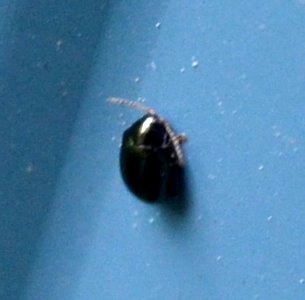

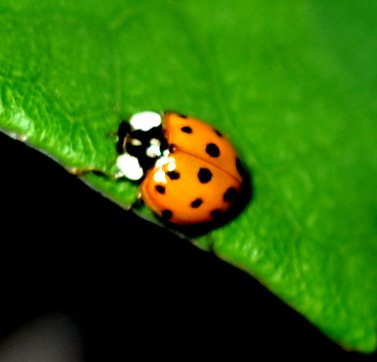
Here is the omnipresent metallic olive beetle, a mystery beetle that looks as if it had been dipped in chocolate, and another of those tiny lightning beetles. I ran into a half-dozen of them yesterday looking as if awaiting the night-time light show.
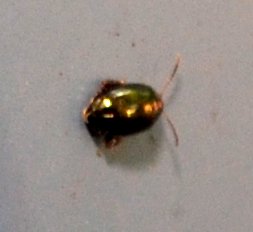
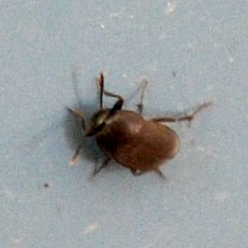
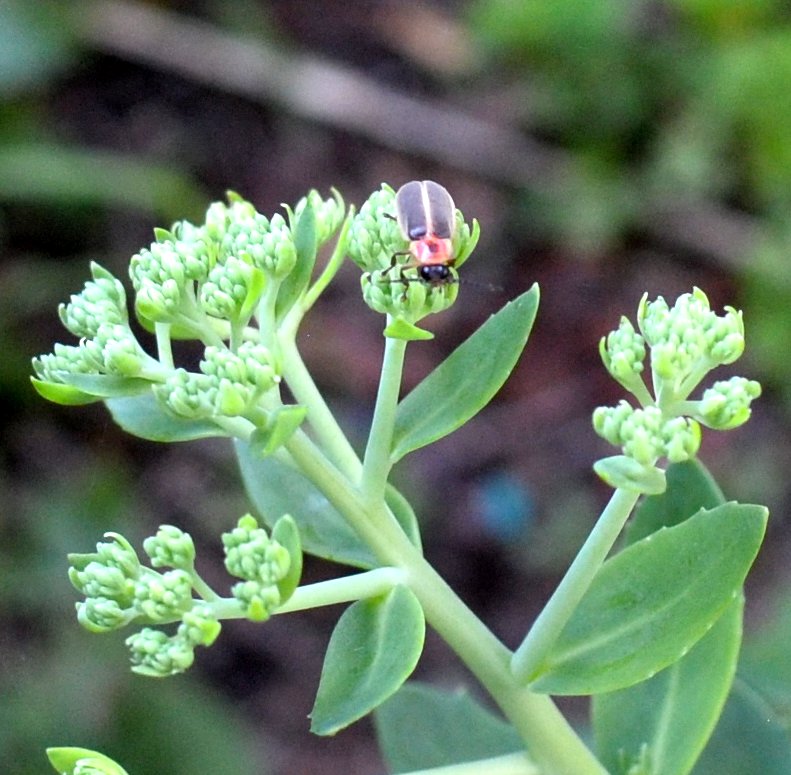
Now we've really got some little jewels in store for us. These are the bugs, of whom my favorites of the week are the little leafhoppers and their nymphs. I don't know what the first one is (first two images), but it is very delicately patterned. The fuzzy third image seems to have some pattern elements in common with the first.
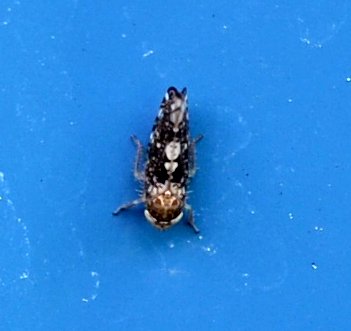
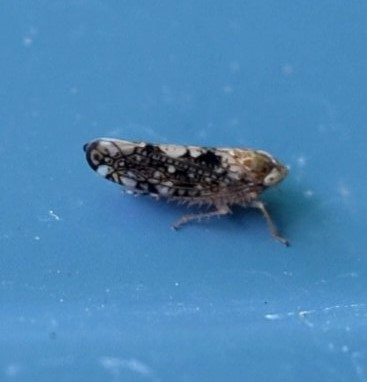
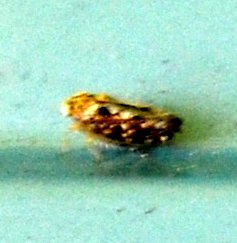
Everyone's favorite leafhopper is here too - the candy striper. And here are two brown ones: the second image isn't ID'ed yet, but the third one, Aphrodes, is another old friend. Oops, wait, the back legs of number 2 don't have the spiky treads - so not a leafhopper! But I'll leave it in here so you can see how easy it is to assume something.
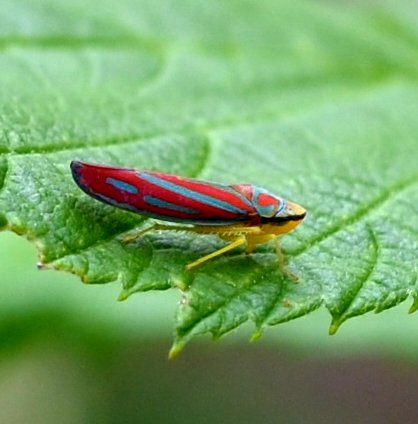
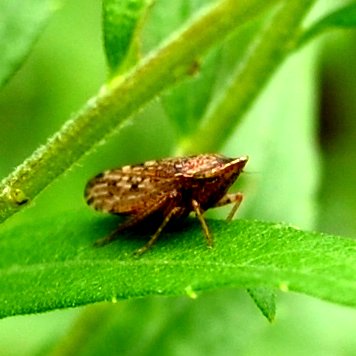
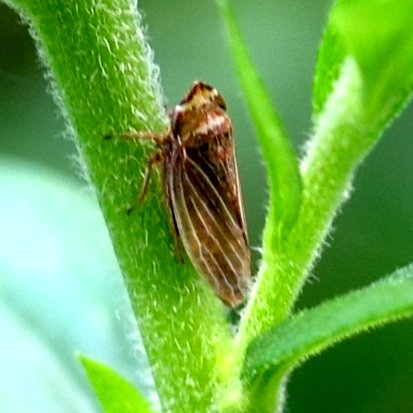
Now here is one of the little leafhopper nymphs that I like the best. Little Coelidia olitoria has such a unique posture and interesting color combinations. Even though the adult one is pretty dignified looking, the nymph reminds me of everything from Oliver Twist in his begging posture to a martial arts practitioner rocking on its legs anticipating an offensive strike. They are the only ones I've seen to curl up their heads AND tails. Here I'm showing you several different individuals. First is a back view so you can see the curling position, while the middle image is a side view. Third is the martial arts pose. Look at the amazing colors it seems to be wearing. This is the best shot I've got of this bug, and maybe it's because a) the wind stopped; or b) the bug stopped, or c) my trigger finger stopping shaking, a rarity!
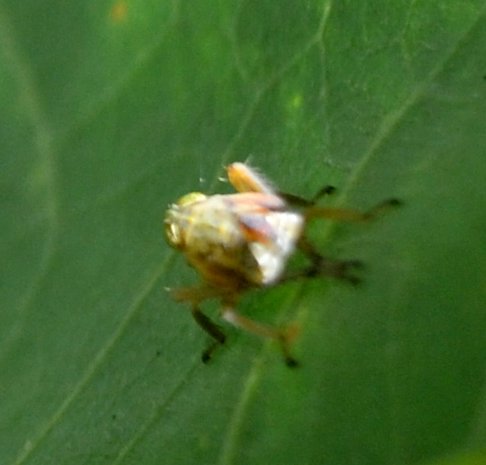
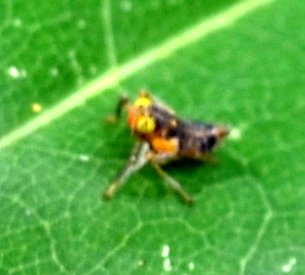

Here are a couple of leafhopper stragglers. This green one resembles quite a lot of other ones. The second is a Japanese maple leafhopper, and both are real leafhoppers.
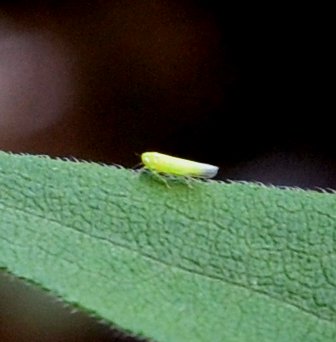
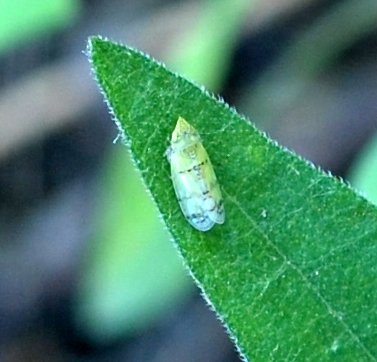
First of the non-leafhoppers we encountered lately are this white Northern Flatid Planthopper, Flatormenis proxima, a long name for such a small hopper. Let's compare its wing-shape with one of the common leafhoppers. See, the rear end of the planthopper's wing seems pulled down so that it makes more of a rectangular longitudinal. The curve at the top left is more "angular" while the curve at bottom left is more gradual. That's the general shape for Flatid Planthoppers. For the leafhopper, the top left is a sharper angle, and the descending curve much more gradual. Too bad the planthopper of the week is white, because the flat angle light beam seems to erase the sculptural aspects. This bluish planthopper, another of the Flatid persuasion, once I've flipped it over the branch it's sitting on, generally agrees with the geometric description of the white one, and you can actually see some of the indentations in it.
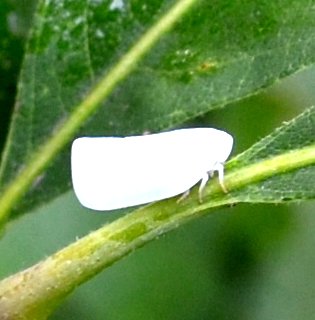

 7 13 17 1a.jpg)
We have seen the interesting nymph of the Issid Planthopper, a differently shaped planthopper. Here is its picture as seen in Bugguide. It is a surprising nymph, with its "stack of straws" tail. This week I found a couple of nymphs in several different instars. First image: a younger nymph from 2016; second, a slightly older nymph (note little wing growth), third, one seen this week showing more wing growth. As I admitted last week, I would definitely have said this critter had to be a leafhopper, and I was guessing, the nymph of a candy-striper!
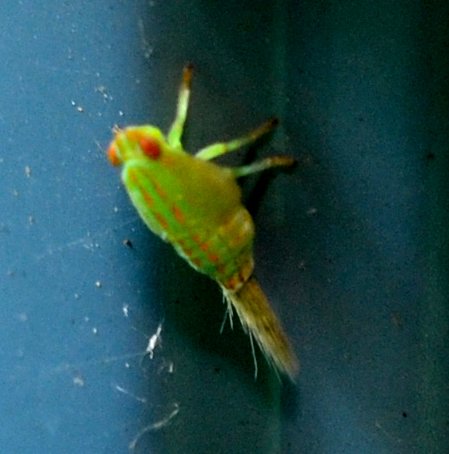
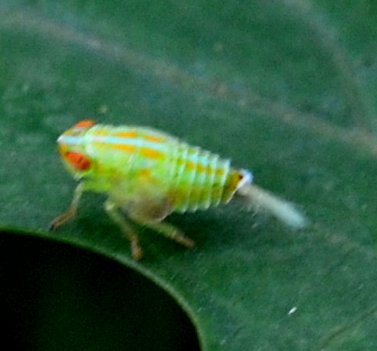

Oh! Is this an adult extricating itself from the fuzz-tailed one? How about this one?
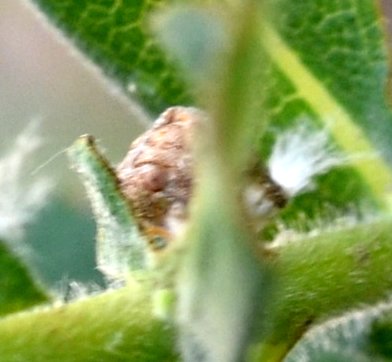
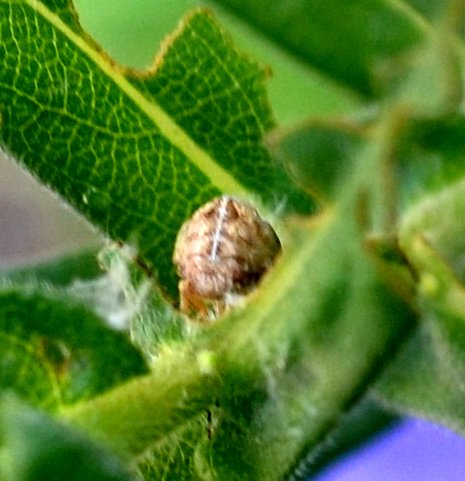
Do you remember the ambush bugs we started seeing last year in September? Here is one having a bee for lunch. Well, this past week, while on my mad hunt for aphids in goldenrod, I found one stalk with some aphids. Just below the aphids was a strange greenish shape - no definitive other color markings, but with some very evocative huge claws for such a small body, and a posture similar to that of the ambush bug. I checked it out with iNaturalist.org. This is the first time I've ever seen such a nymph. Right shape, different color, different pattern, different size.
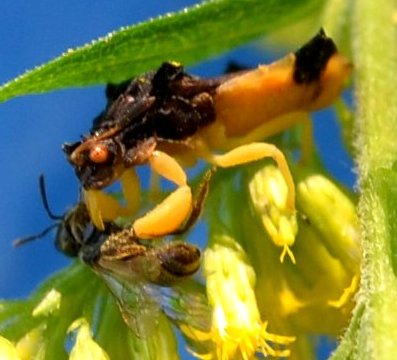
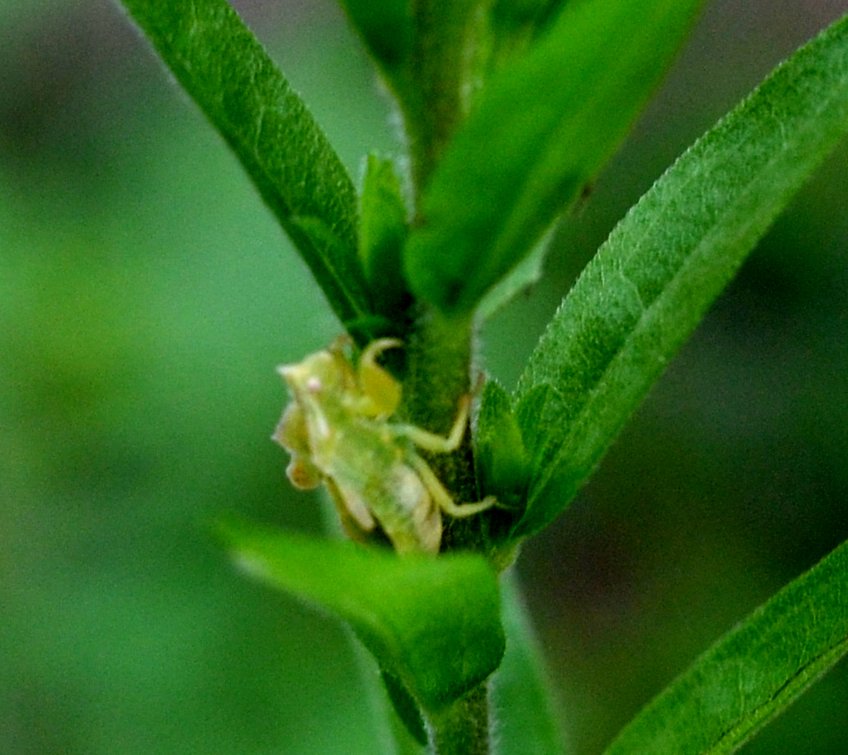
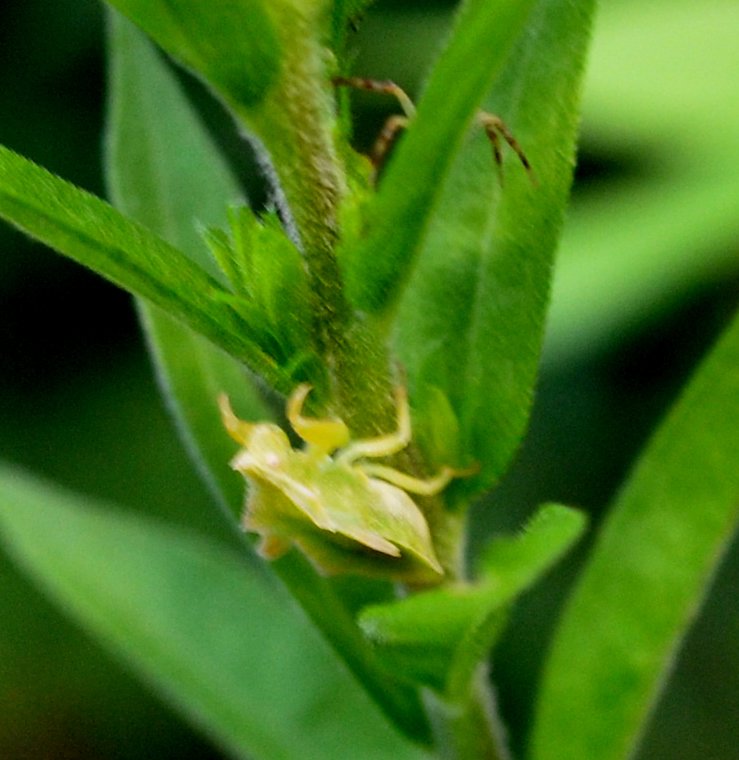
Another week with no successful photos of a damselfly. I did eyeball one of these spreadwing damselflies from two weeks ago, but no camera shots. I could see the length of the tail and the spread wings and the bright blue end. (the eyes) But I admit that doesn't count. This first image is from earlier this month! BUT! One of the things I found in the water while I was playing microfiche reader flitting from place to place a damselfly nymph, or naiad as they say. Here's the poor little thing almost eclipsed by a piece of debris. It was one of those lucky finds. A person on iNaturalist.org even got it closer, not to species, but to narrow-winged damselfly. That's pretty amazing! Dragonflies were more in evidence. Here is a very early Autumn meadowhawk. At this time of the year, they seem to be juveniles. Their faces are quite expressive, mocking human faces. #3: winking; $3 sly (or pleased with itself).
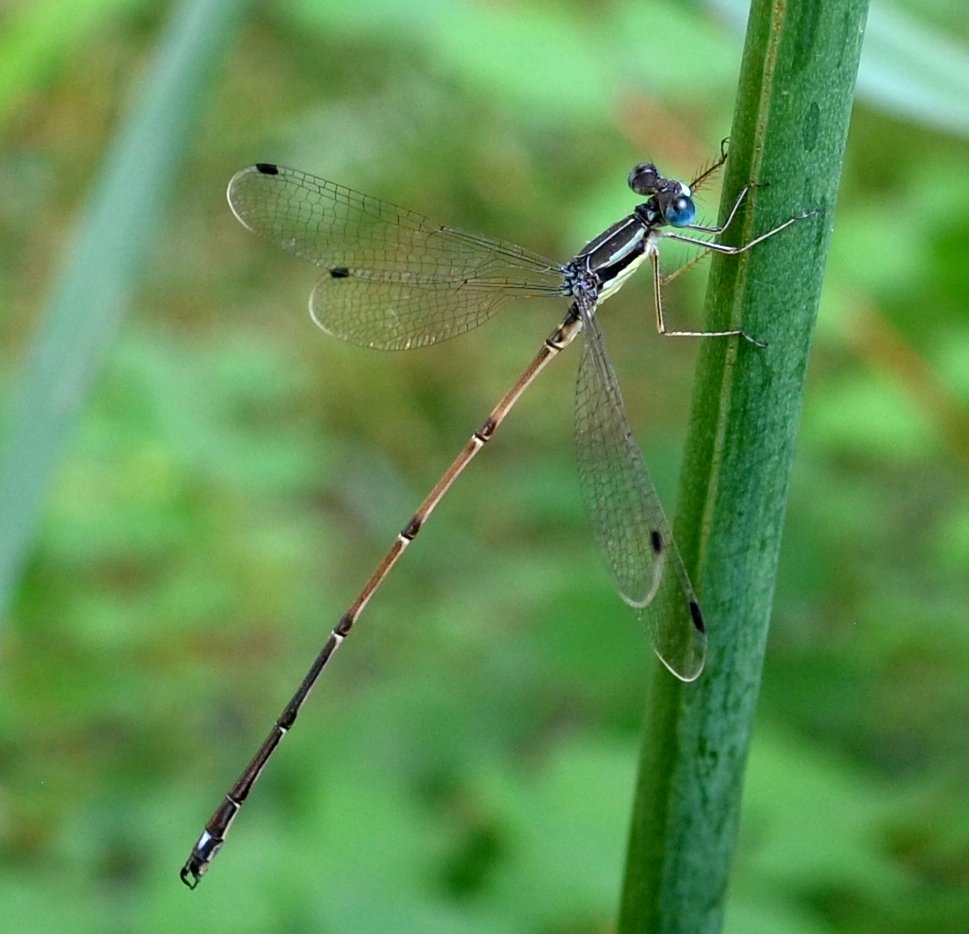

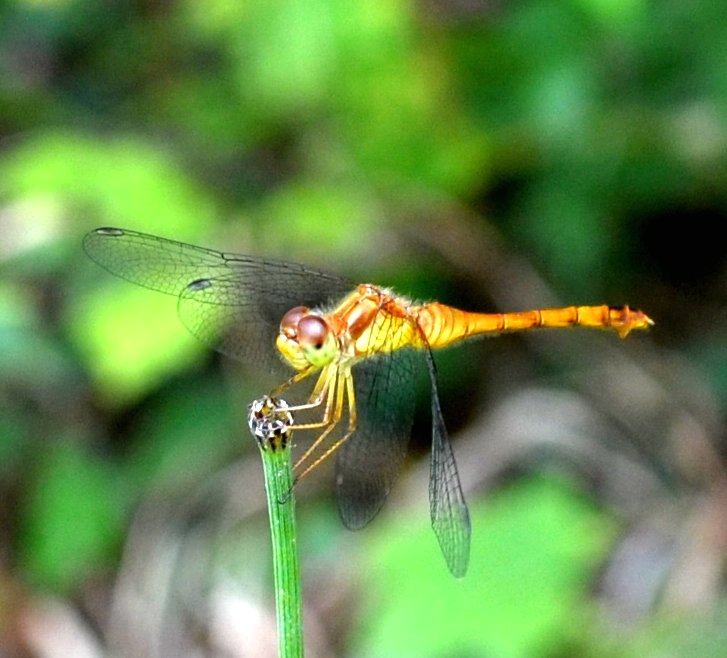

More dragonfly faces. #1: oops, sorry; #2: Hi pal. My luck turned when this female Eastern Pondhawk showed up; Then yesterday this one showed up far from me. I took the picture from that distance, then moved about 10 inches closer and closer till I got this fairly good one. But I noticed the tail was a different color and decided it was a juvenile male. If that's true, eventually he will turn that beautiful blue color that's starting on his tail until he is blue all over.
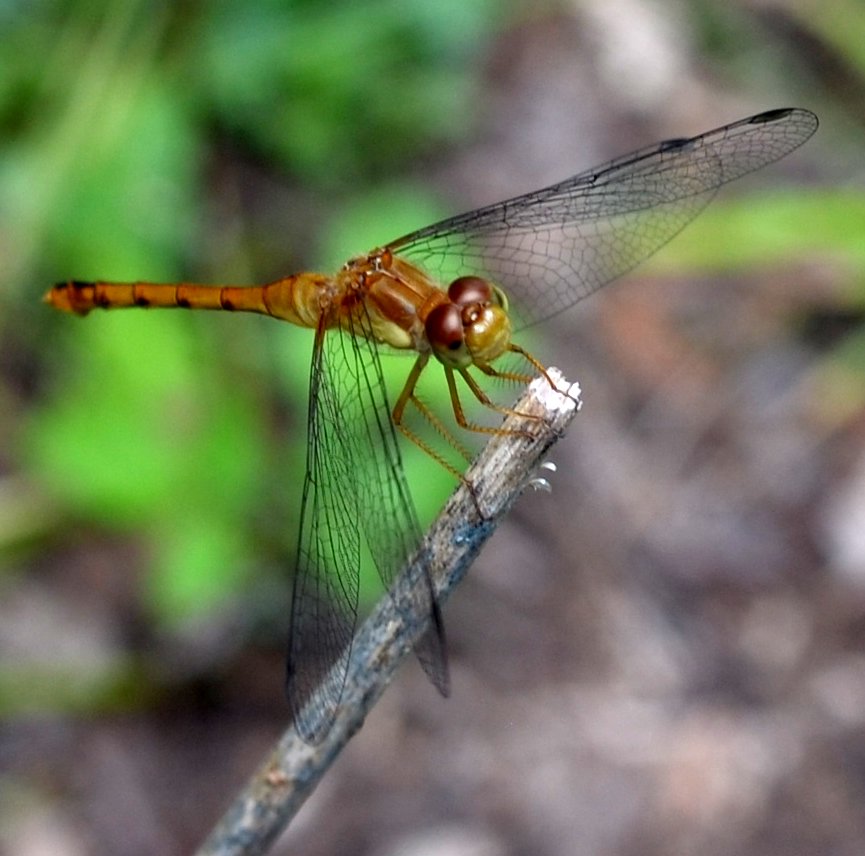

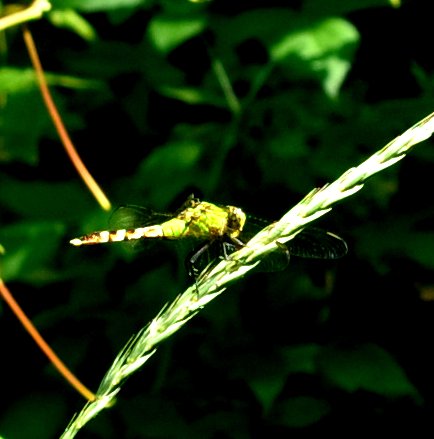
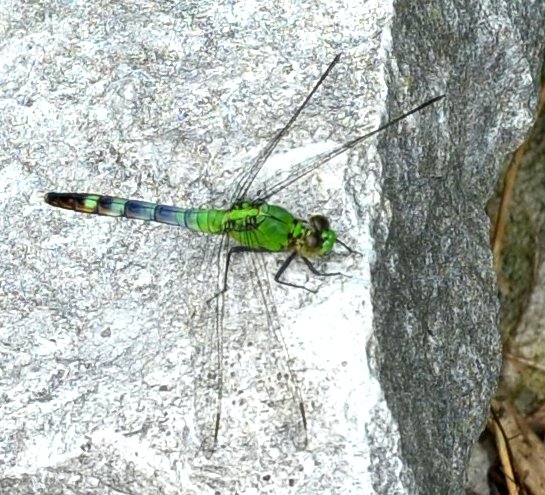
Let's see some flies. Here's that golden dung fly, a pretty little mystery fly, and a long-legged fly with dark wings.
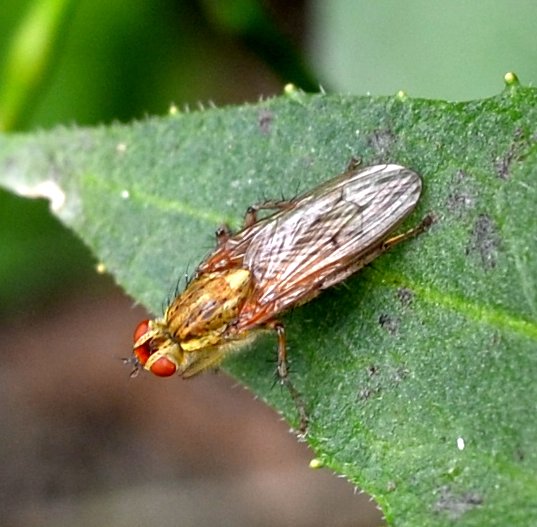
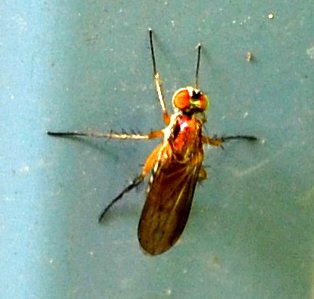
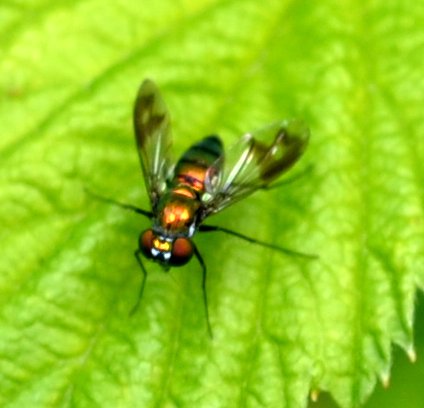
Here's one of those Chironomini midges. Very attractive and I don't think they're the ones that want to bite me. It's been a bumper year for moth flies. Here's a brown one. And here is a mystery insect that I thought might be a mosquito at first. Are those her yellow eggs?

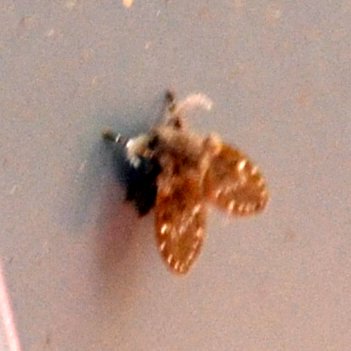
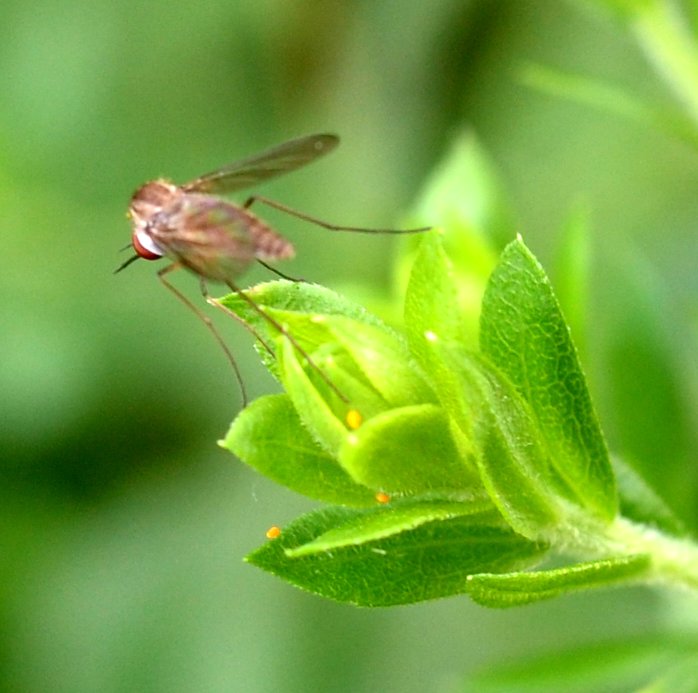
Here's a nice blue-grey fly - that's all I can tell you about it. Is the second one a fly posing as a wasp? I think so. The third one actually is a fly wasp-mimic! Just look at those fly eyes! Out of place, I know, a fruity fly.
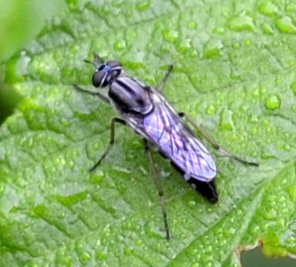
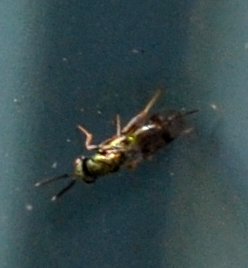
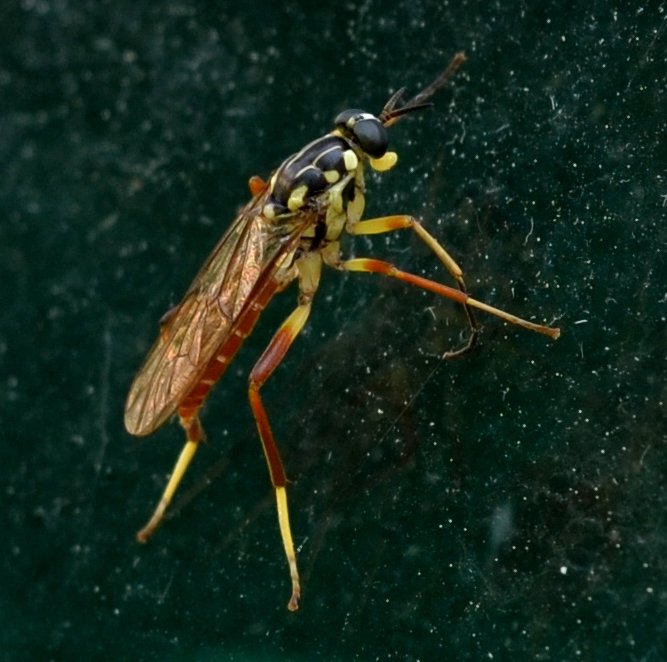
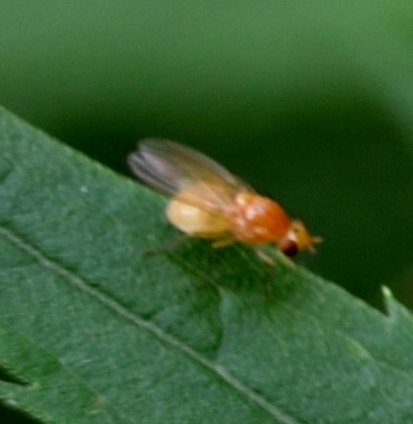
This week had a lot of decisions to make - to be a fly or to be a wasp, who knows beside the Shadow? Maybe #3 IS the Shadow!
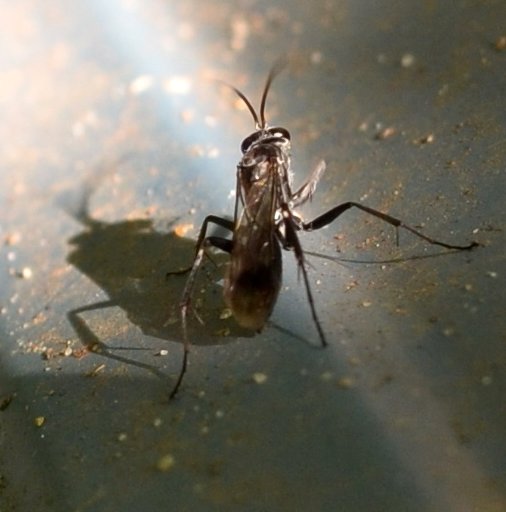
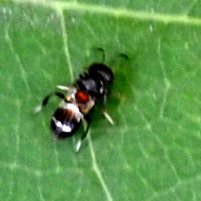
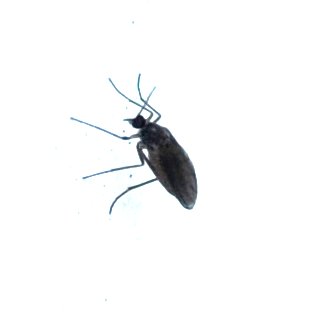
Here are some of the harvestmen. I couldn't beat the colors in this first one (reduced in second one) if I used up a whole box of crayons. Some orange in the third.
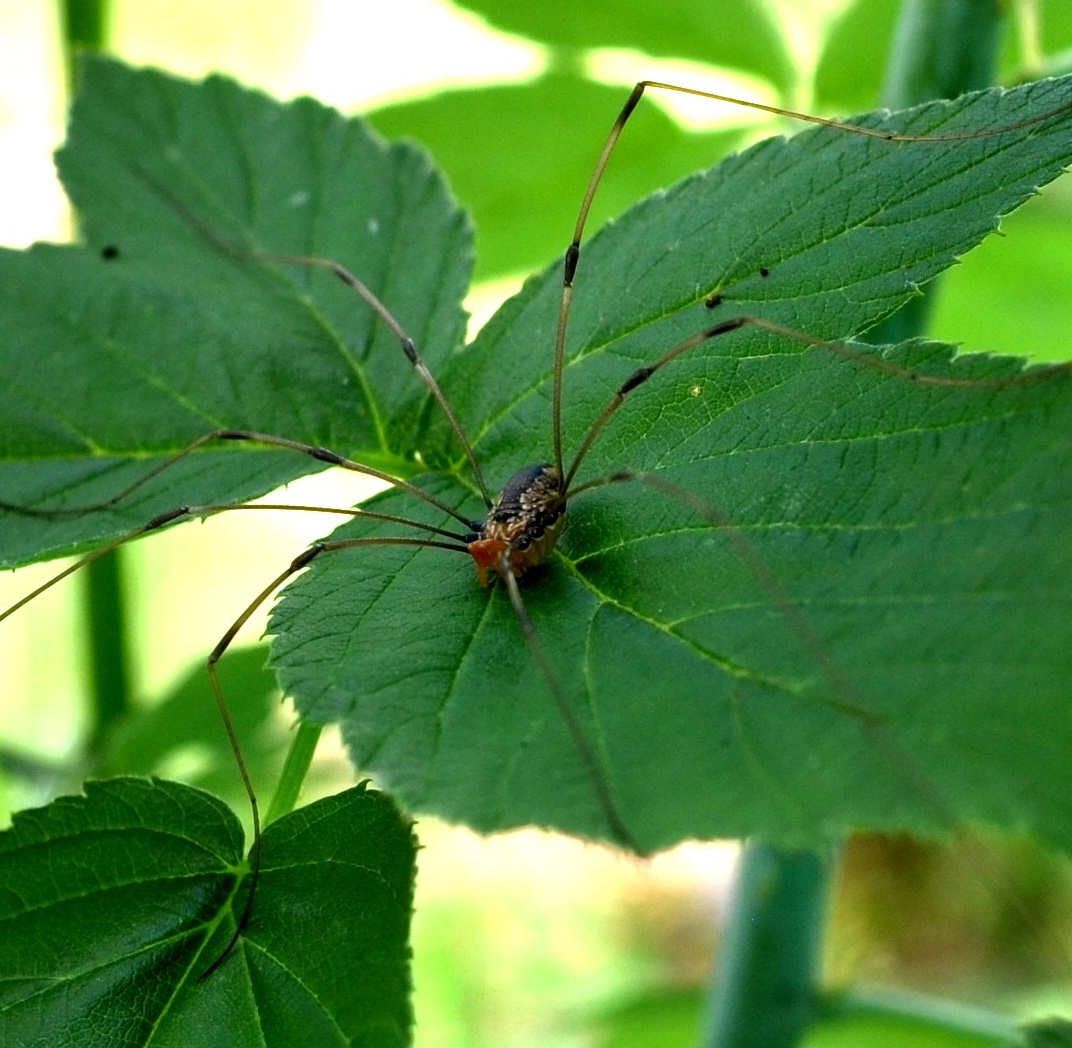
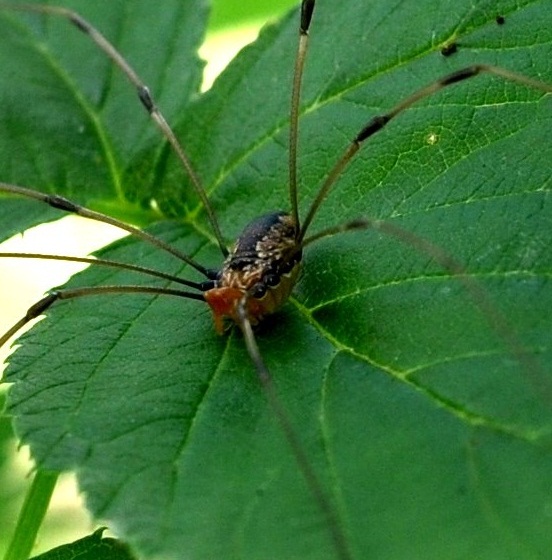
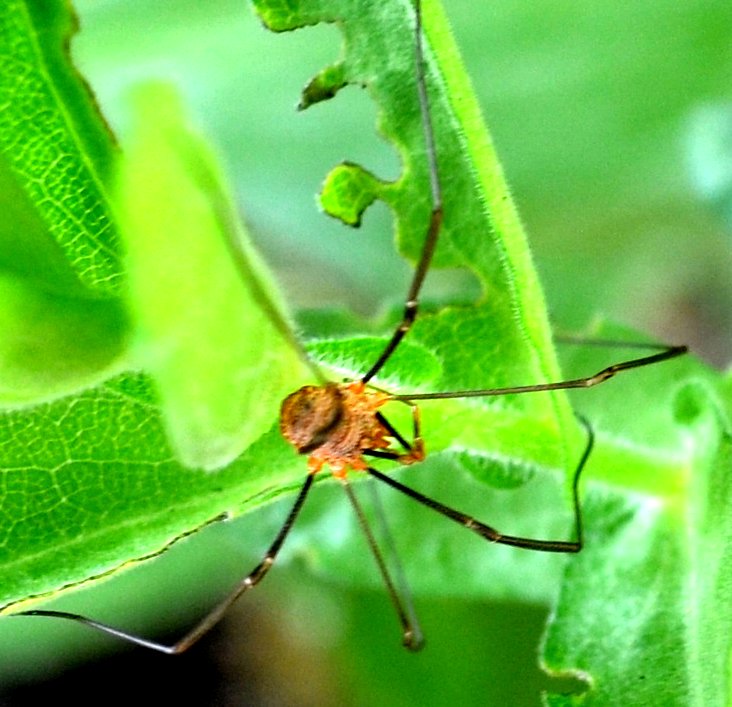
More harvestmen!
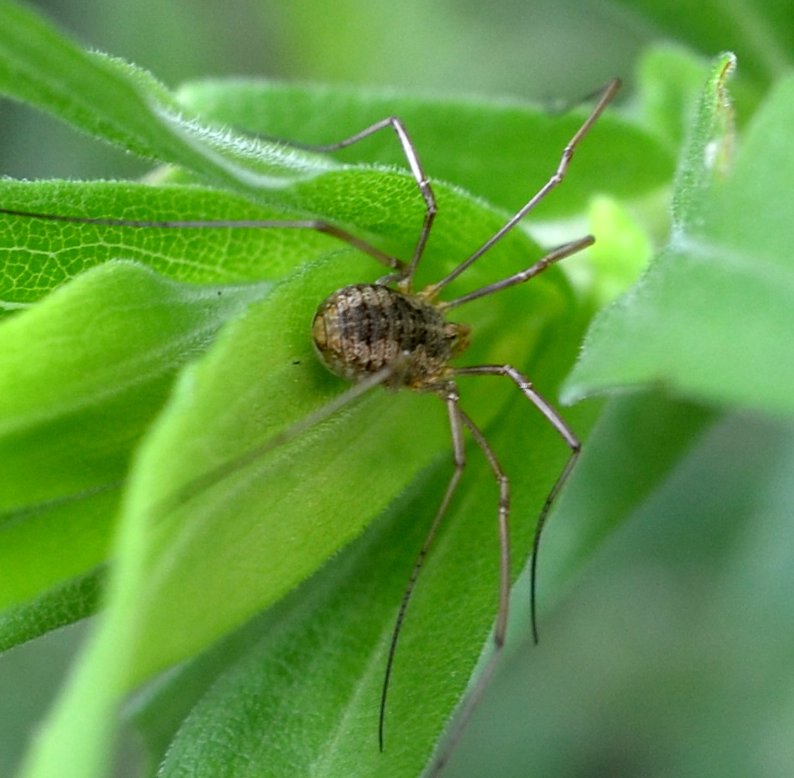
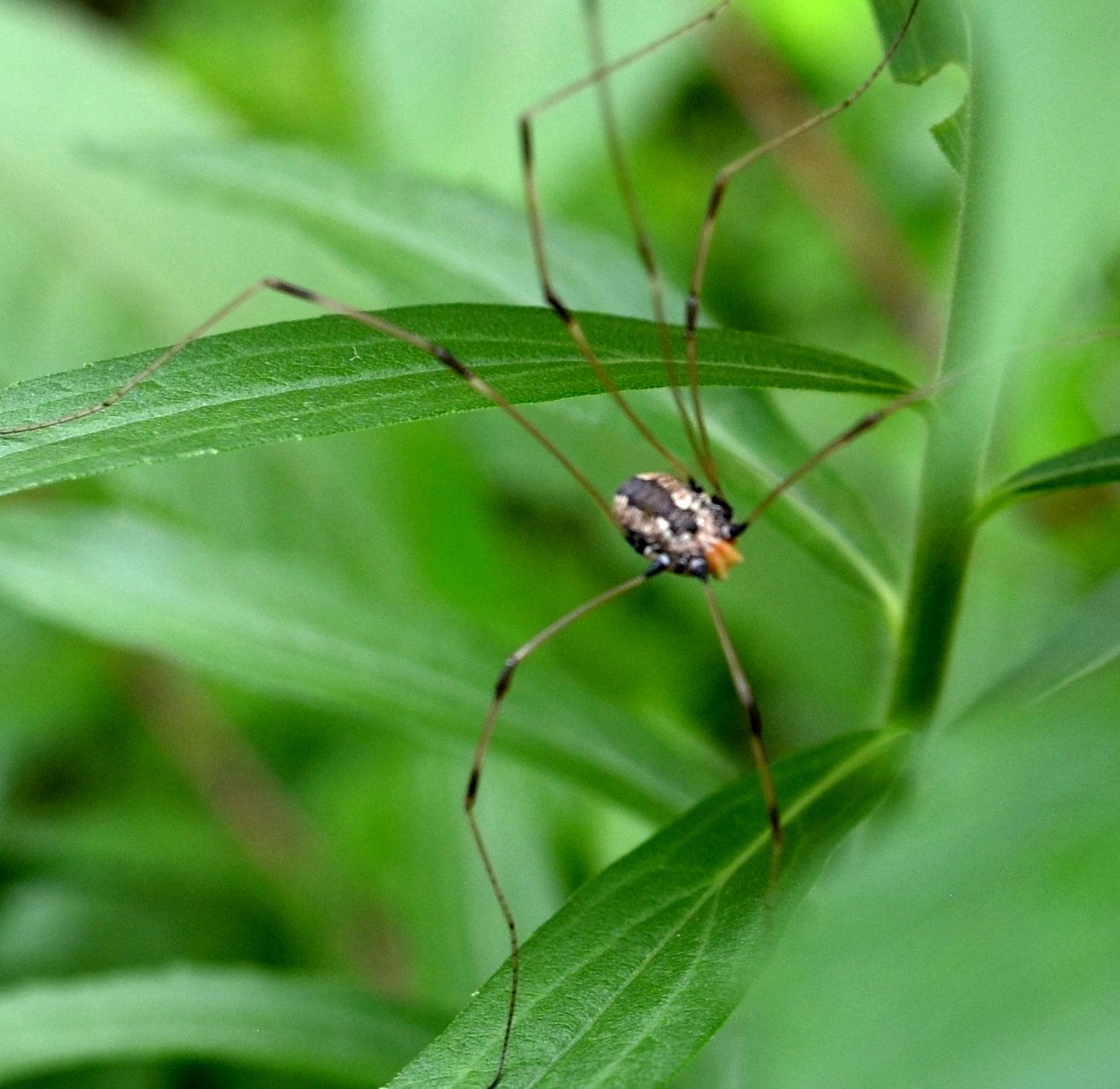
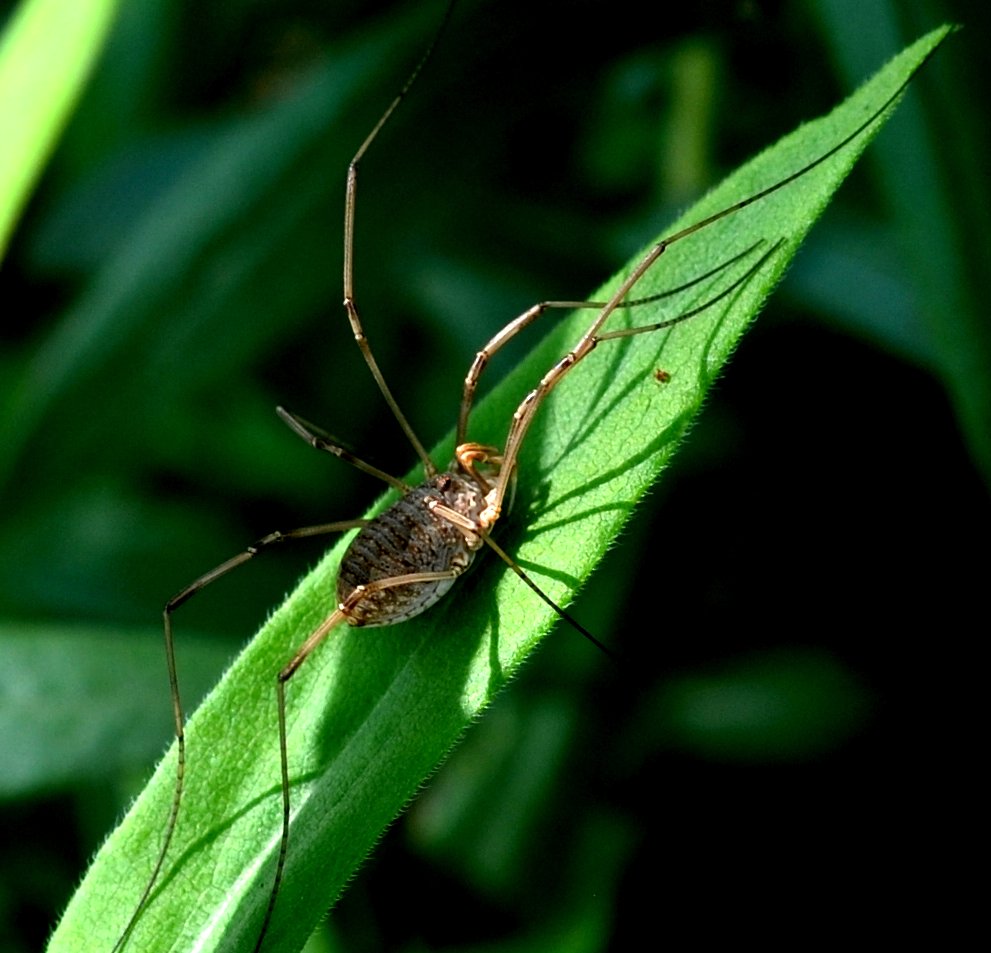
That hibiscus that loses its leaves all over the table in the porch for the winter has regained its vitality! A single hosta bud oozes simplicity. And the Lusty One had a number of blossoms this year after being trampled by humans mad to catch that crazy bug over there.
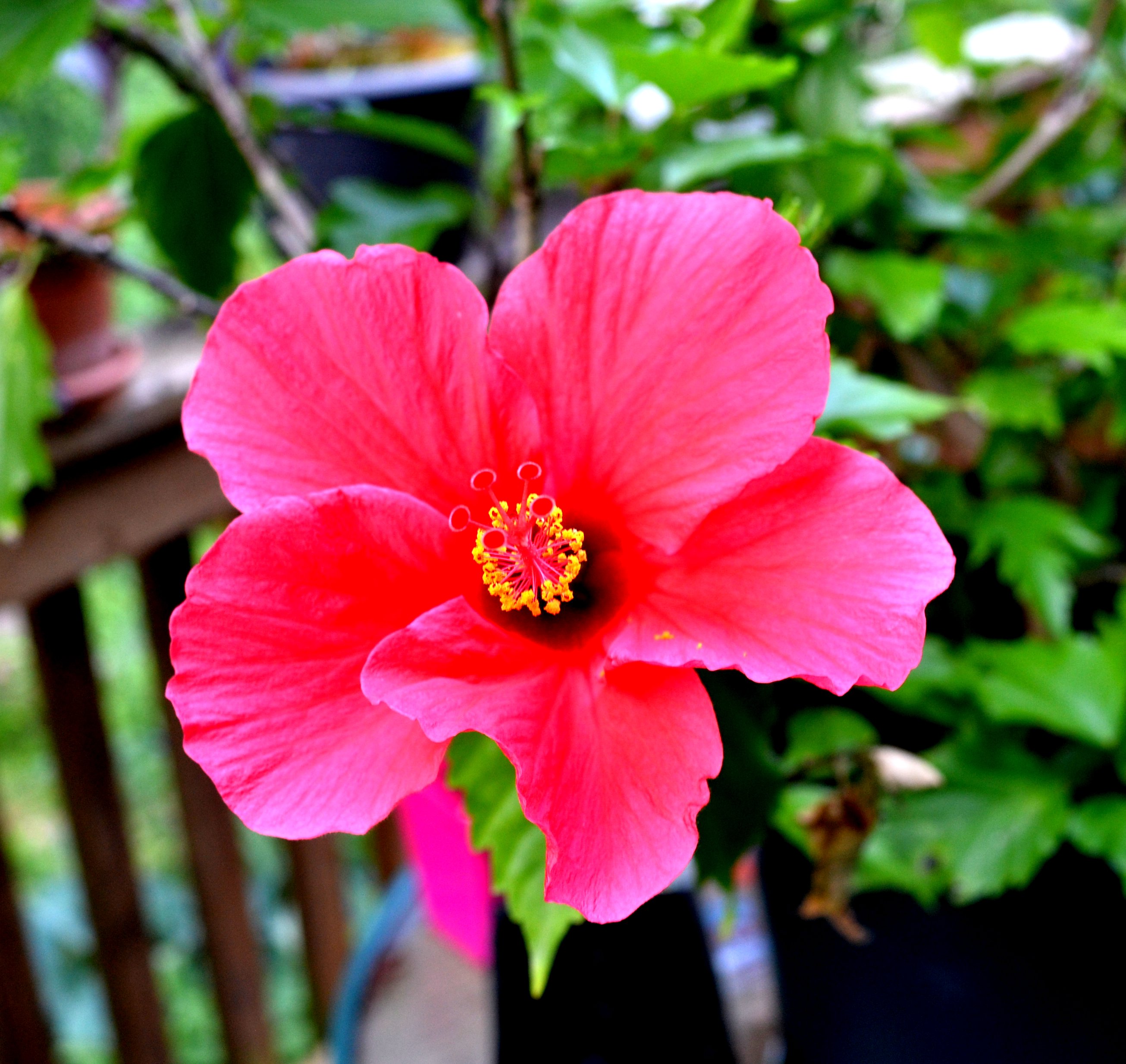
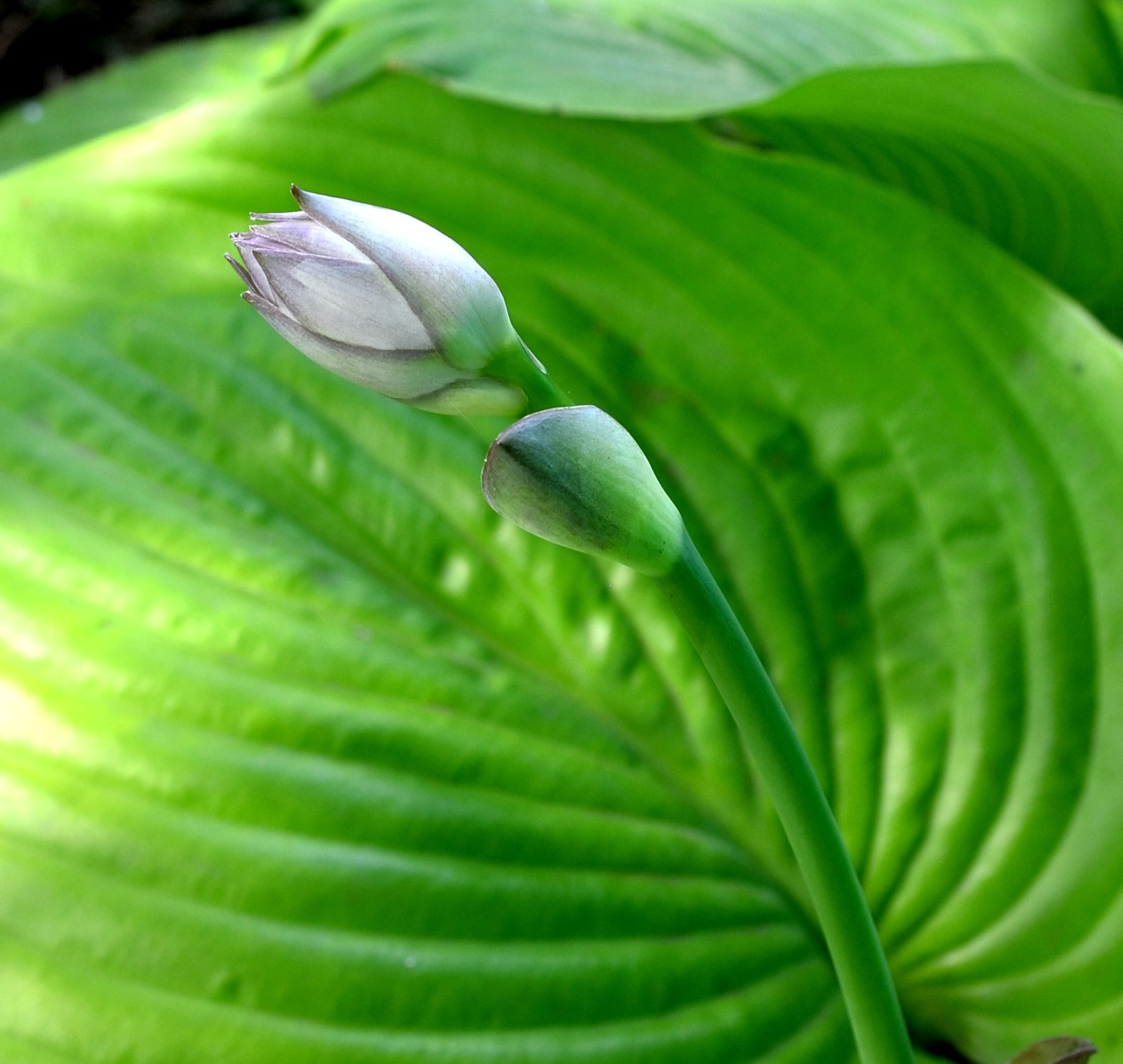
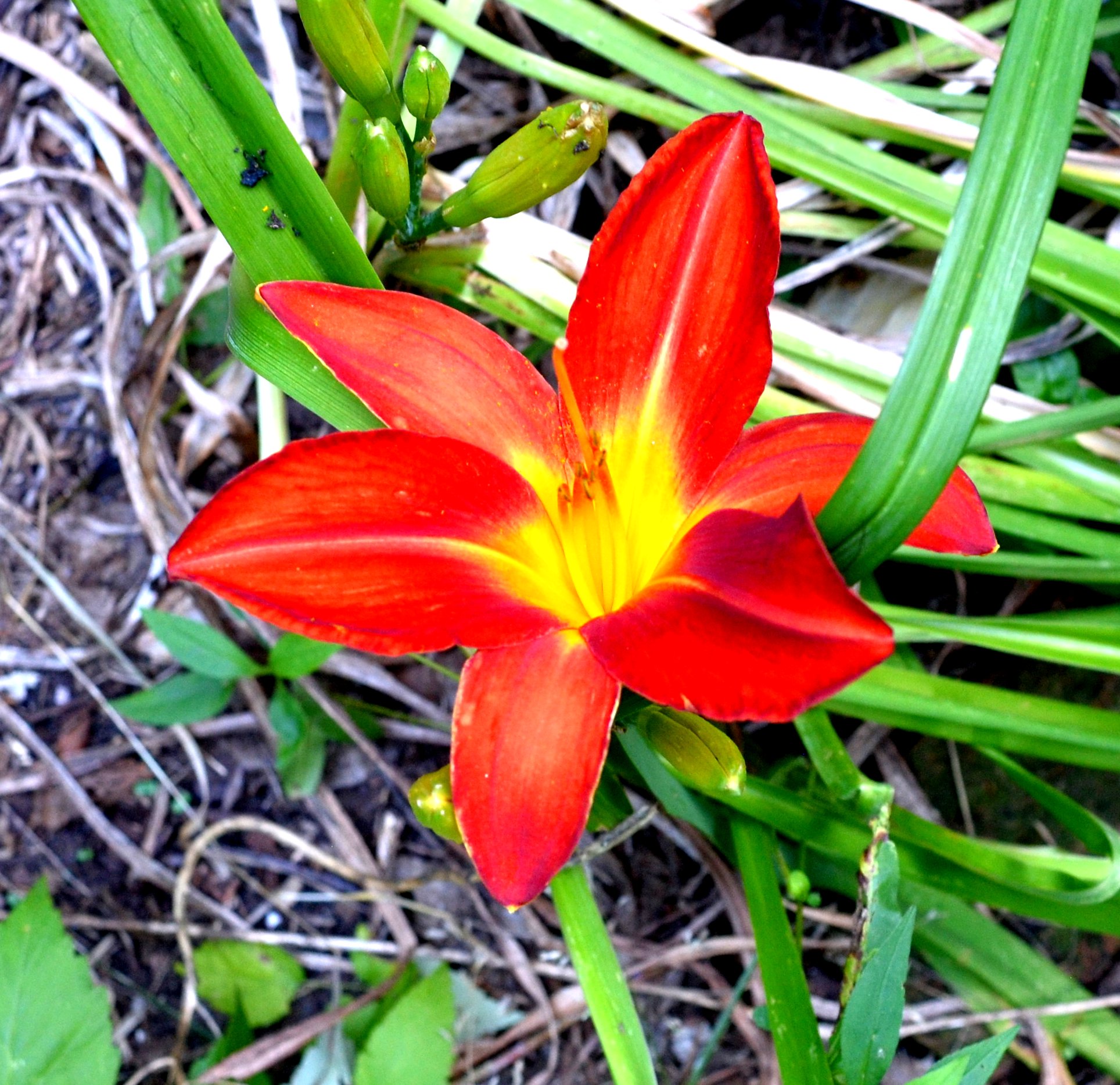
Let's visit a few Lepidoptera. This two-inch monster made itself look like a bit of hardware between the porch windows. This all-green tobacco/tomato hornworm may be the child of the hornworms Kathleen gave me last year. That lot tore into the Woodsy Nightshade. Now it seems they have a new crave - wild grapevine! Good! Third - a mystery moth.
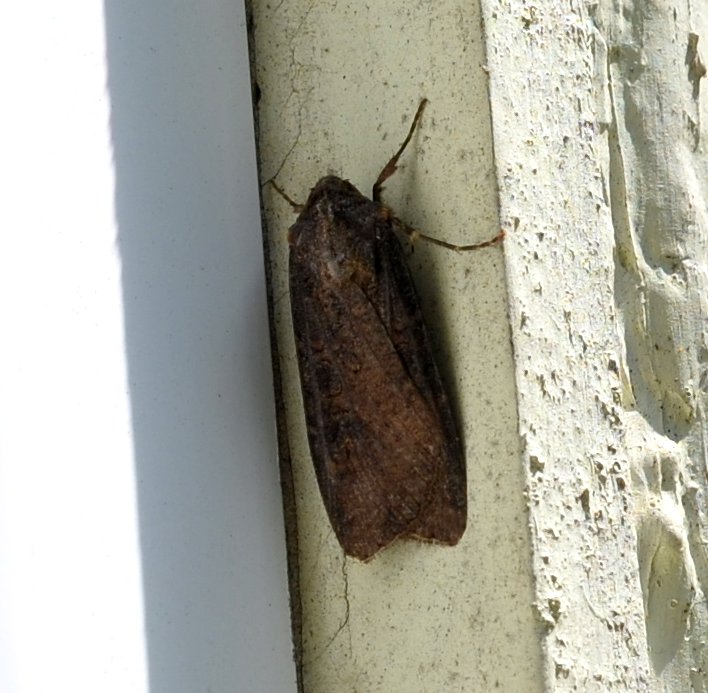
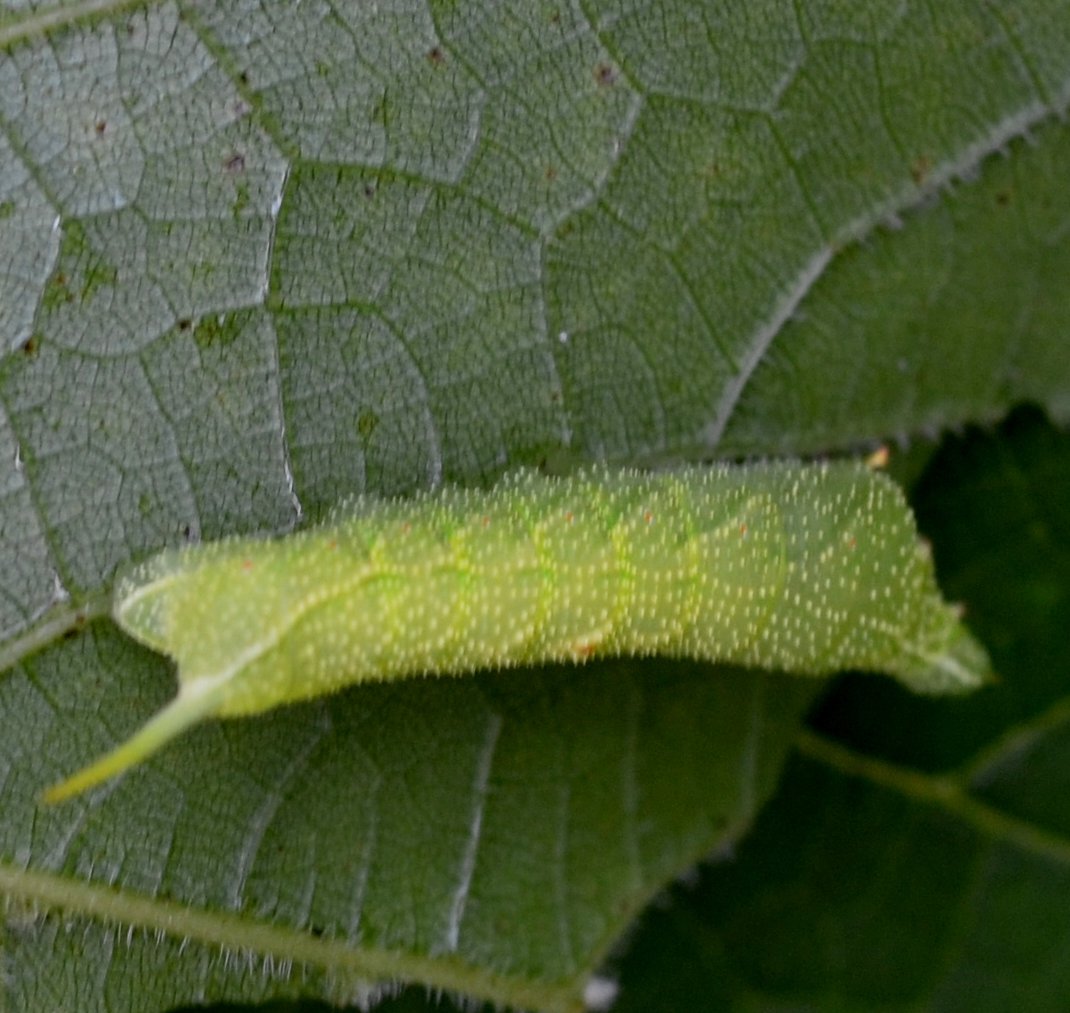
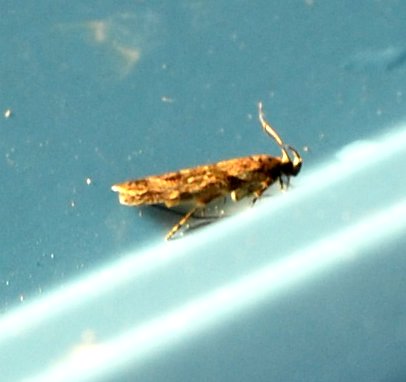
More moths! This one leans like a leaf miner. Another mystery! And another! Where's the Shadow? A red-spotted purple butterfly fell to on a little patch of water by the pond, quite far from me. I managed one shot and that was all. They have never let me photograph them before though, so that's a lot. Oh. I almost forgot. I got a photo from my neighbor James. Same butterfly - it's such a small distance from here to his place, wonder if it's the same butterfly or if there are lots of them all over town?
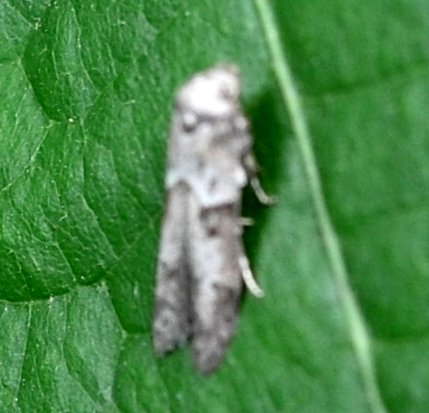

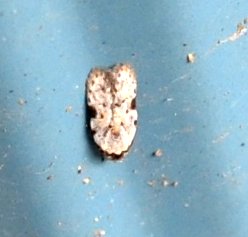
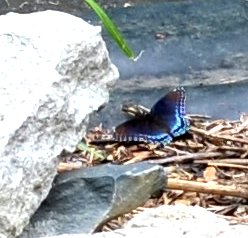
Baby orthopterans unite! Here is a larger version of the nymphs we've been seeing for weeks. It is getting the shaving lotion look on its cheeks - same as other Scudderian bush katydids. So far it looks like a male - no ovipositor! On the 21st, this one in an earlier stage. I would have bet they would all be in the same stage of development, wouldn't you have?
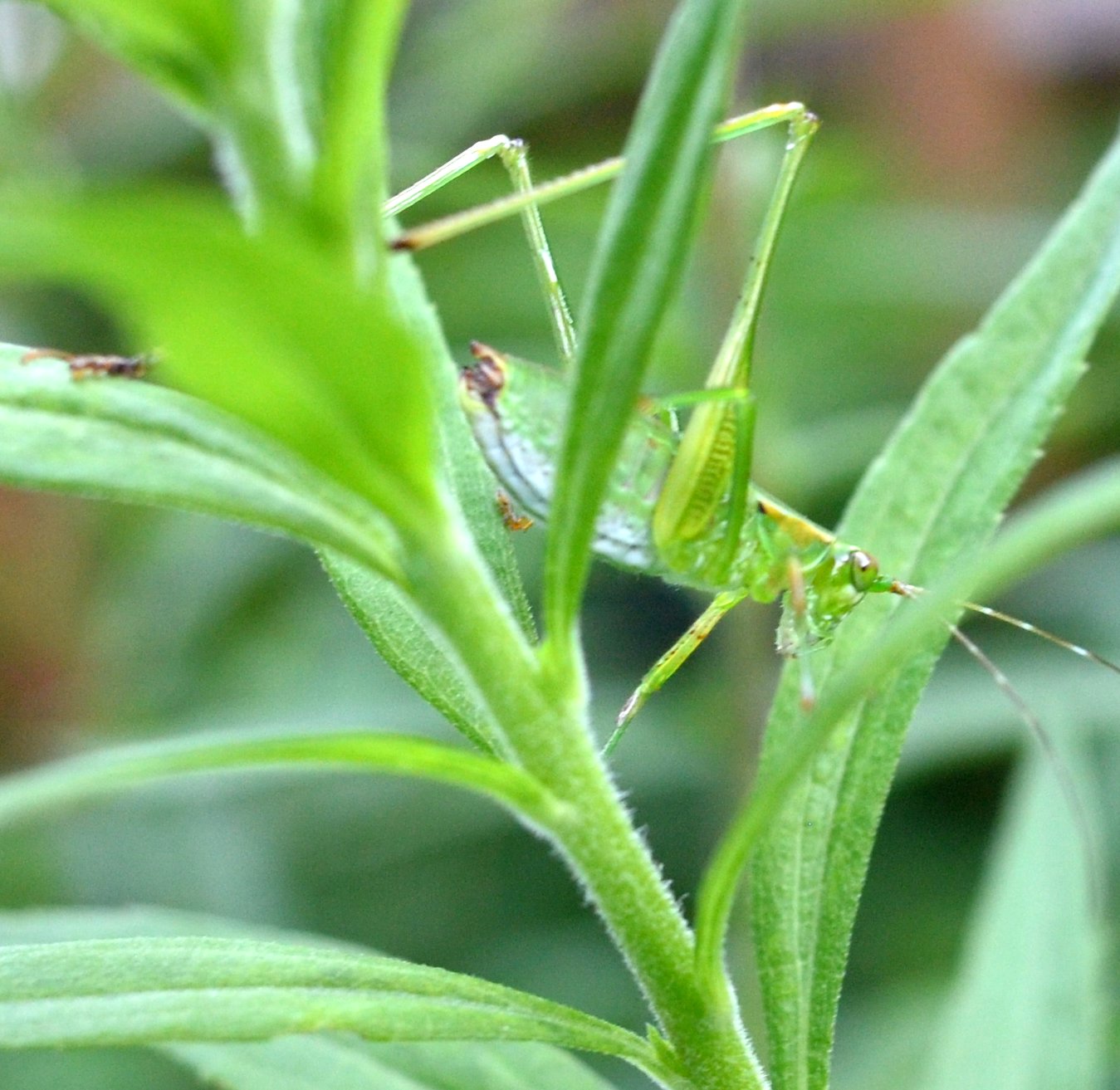

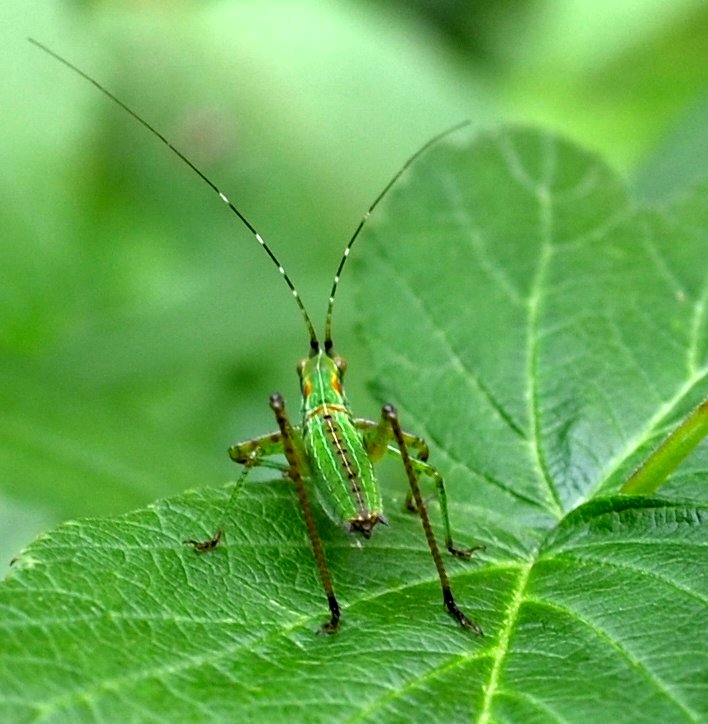
The great colors of the Scudderian against the glow of a lemon lily! This little crab spider was in some of the shots of this flower. This new hopper looks like a grasshopper with its herringbone legs.


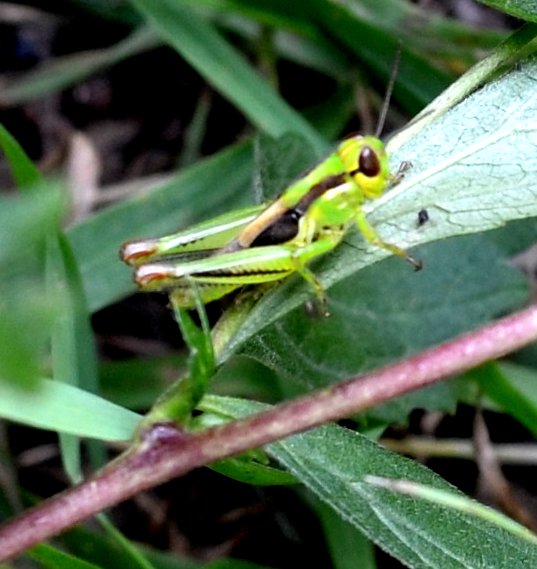
How lively the pond is! Its lilies bloom in magenta or pink. Creatures come to search for little insects and spiders; to find a safe aquatic home for their aquatic offspring; cool off; gather water to mix with pulp to make their paper nests (wasps); and many more pastimes. Here's a little "green" frog sitting on a lily pad. Its yellow upper lip seems to be the sign of a professional Green Frog. Not all frogs or toads spend a lot of time underwater. Their adults have to breathe good old air like us, but their tadpoles need to process water in order to breathe the air stored in the bubbles. A while before the tadpoles complete their metamorphosis they grow a pair of little back kicking legs. They then grow their front legs and lose their tails and climb out of the water to live their fresh-air breathing lives. Here is such a little tadpole on its last couple of days in the pond. This is true for tree and other frogs and toads. Here is a hilarious picture of an adult tree frog who has wedged himself between the bricks in my porch. He is greyish-white at this point and seems to have really easily molded bones, doesn't he? Anyway, the last few days must have been days in which eligible toad-babies emerge from the water en masse. Yesterday must have been a particularly fertile day for the change. It seemed as if I was about to step on a toadlet at any step. Here is a picture of four tiny toadlets just coming out of the water.
What a summer it has been for the amphibians!
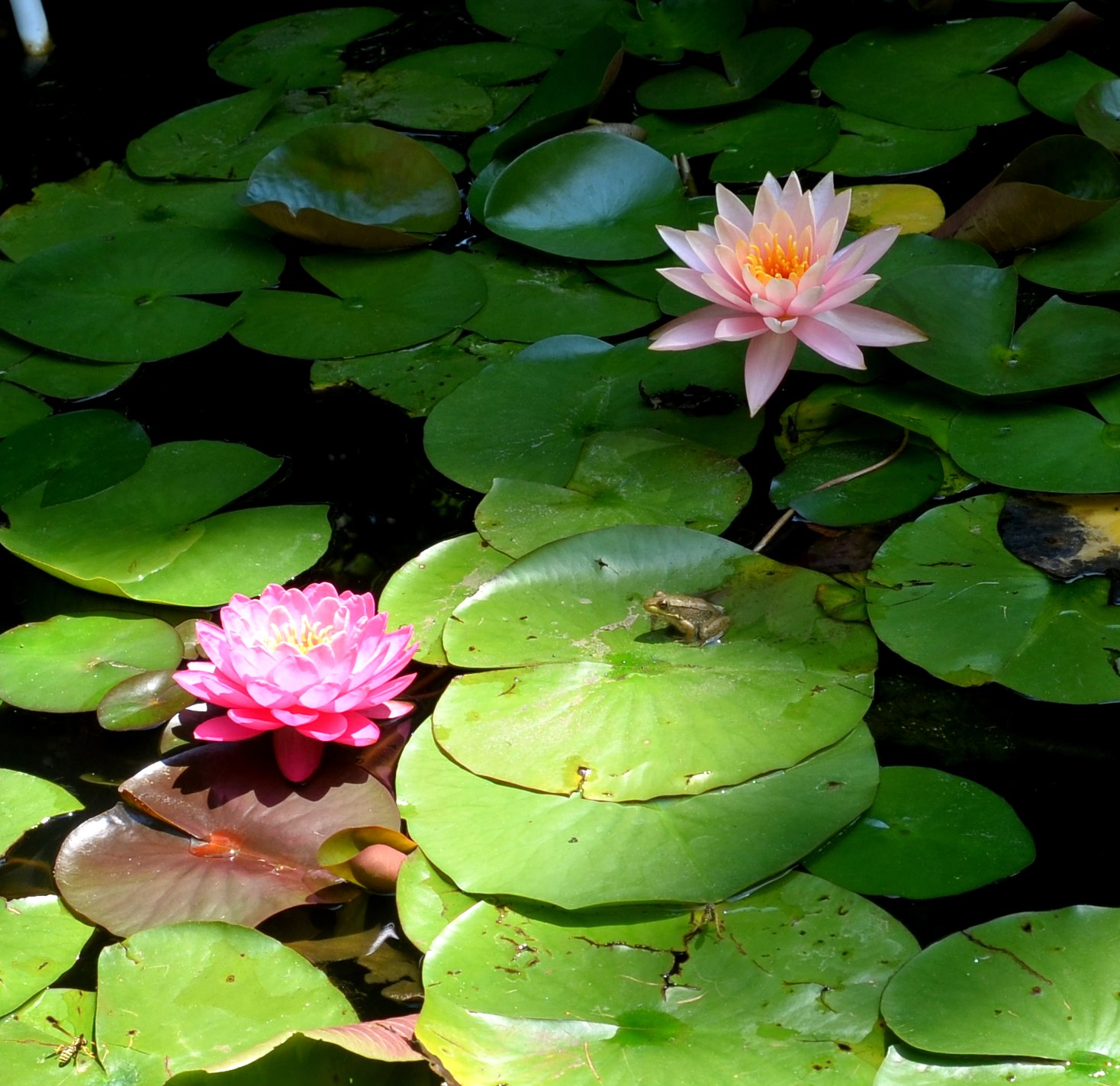
.jpg)
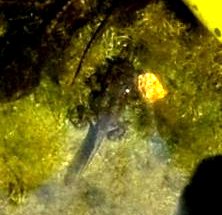
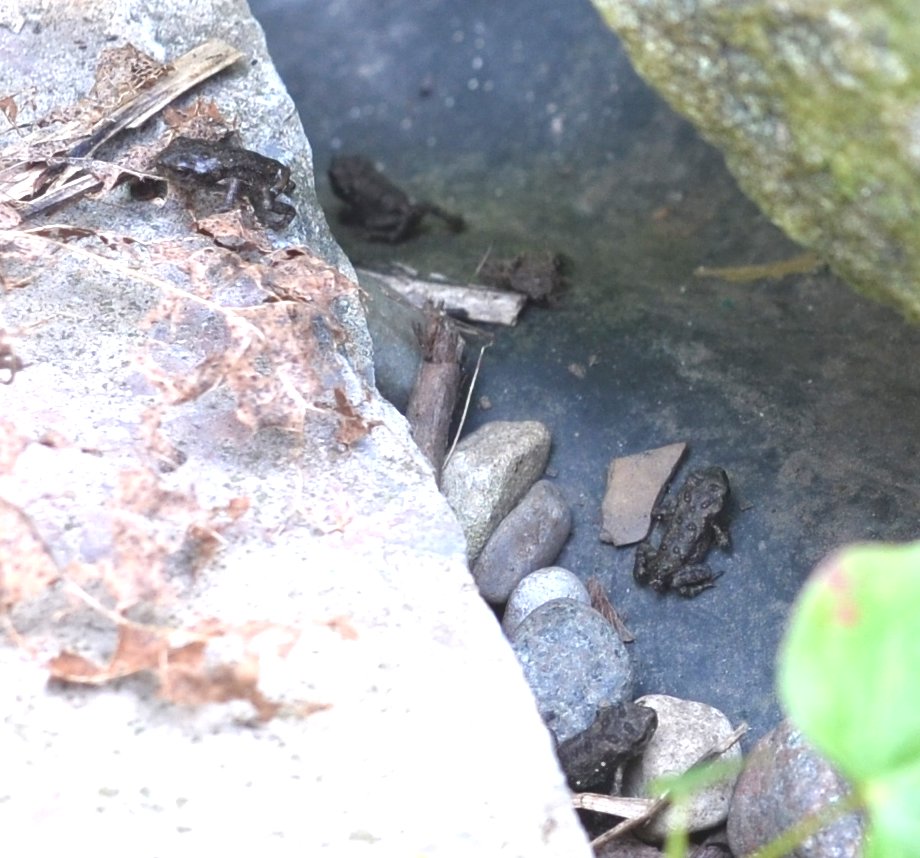
Here is that male Pirate spider (with a firm latch on a male common house spider) and next the orchard orbweaver. I seem to be updating its growth every other day. Third is a Cross Orbweaver, so called because it seems to have a white cross symbol on its abdomen.
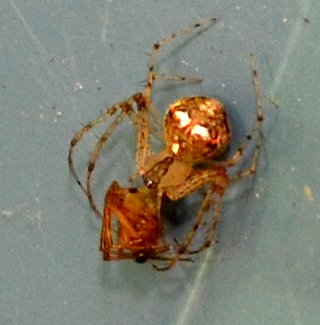
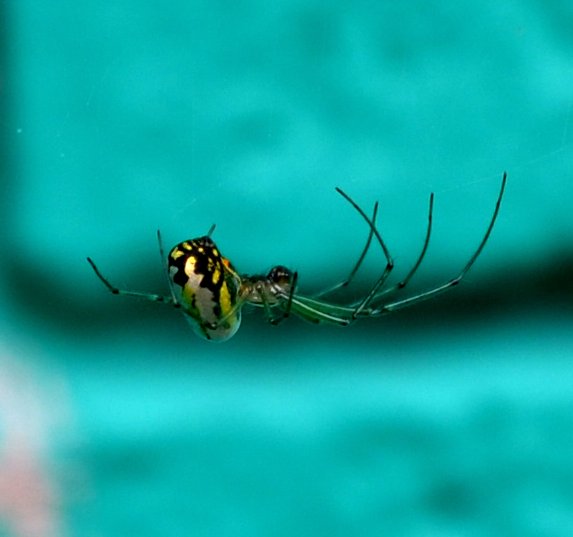
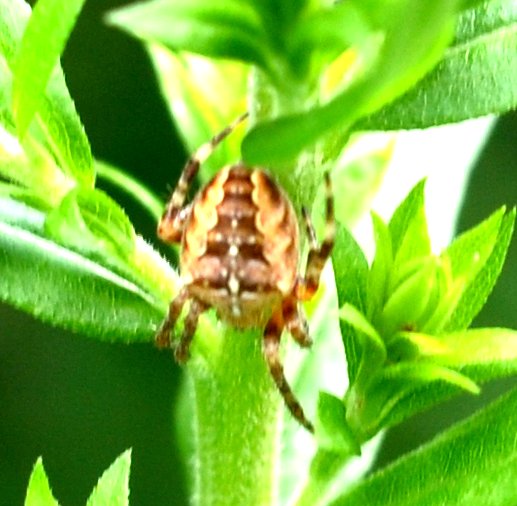
Probably the most frequently spotted spiders in this yard are the grass spiders. They make a sort of funnel web from which they can run out and drag in new prey. Then there is this jumping spider. Remember to look for their big front eyes, which resemble headlights. This one is a male, as you can tell from his huge fluffy pedipalps. I'll bet you are getting good at telling a jumper when you see one and a male or female too. Right?
Next is a Common House Spider. I don't know if this one is black and white instead of brown and white just because it is in a darker location. Will you take a look at the six spiders for today? Would you have imagined they would look so very different?
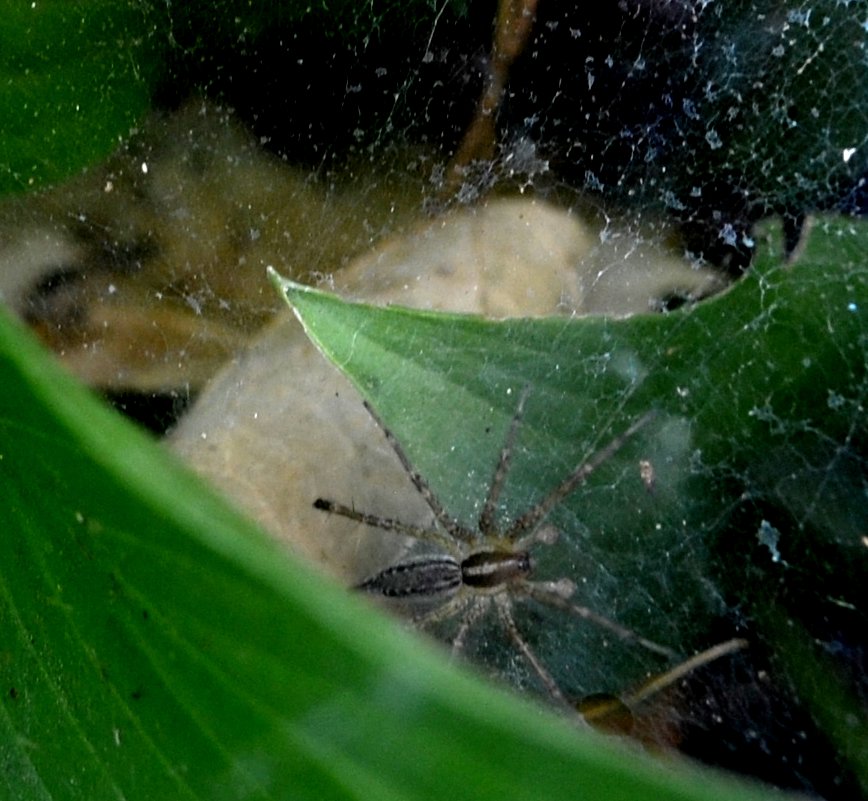
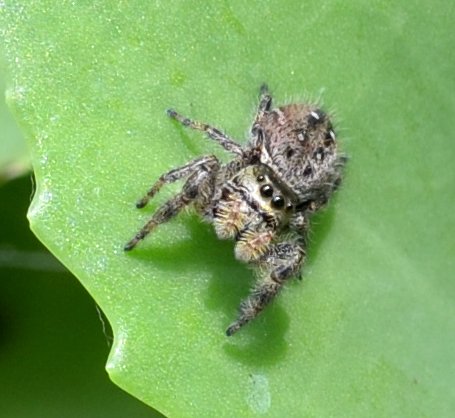
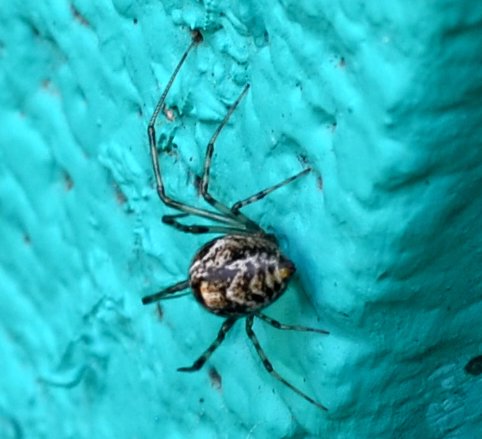
Here are some of the wasps. Now that the goldenrod is getting ready to bloom, we can expect more of these. Here is a female European paper wasp, but with some kind of attitude! The one on the Trumpetvine bud is a thread-waisted wasp. And here is a tiny ichneumon wasp. It's a female, because of that ovipositor.
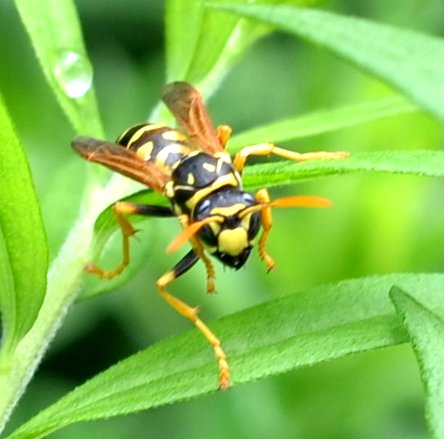
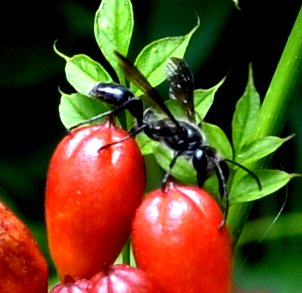
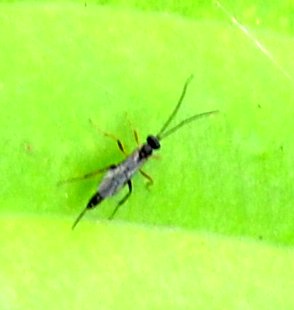
Let's last take a break and look at the flowers again. The trumpetvine is not over yet. And the tiger lilies are about mid-bloom. They suffered quite a bit from the red lily leaf beetles, even though I picked off and killed every one I saw (except for some smart ones that dropped to the ground before I got them). Don't the phlox and blue balloon flowers look classy together?
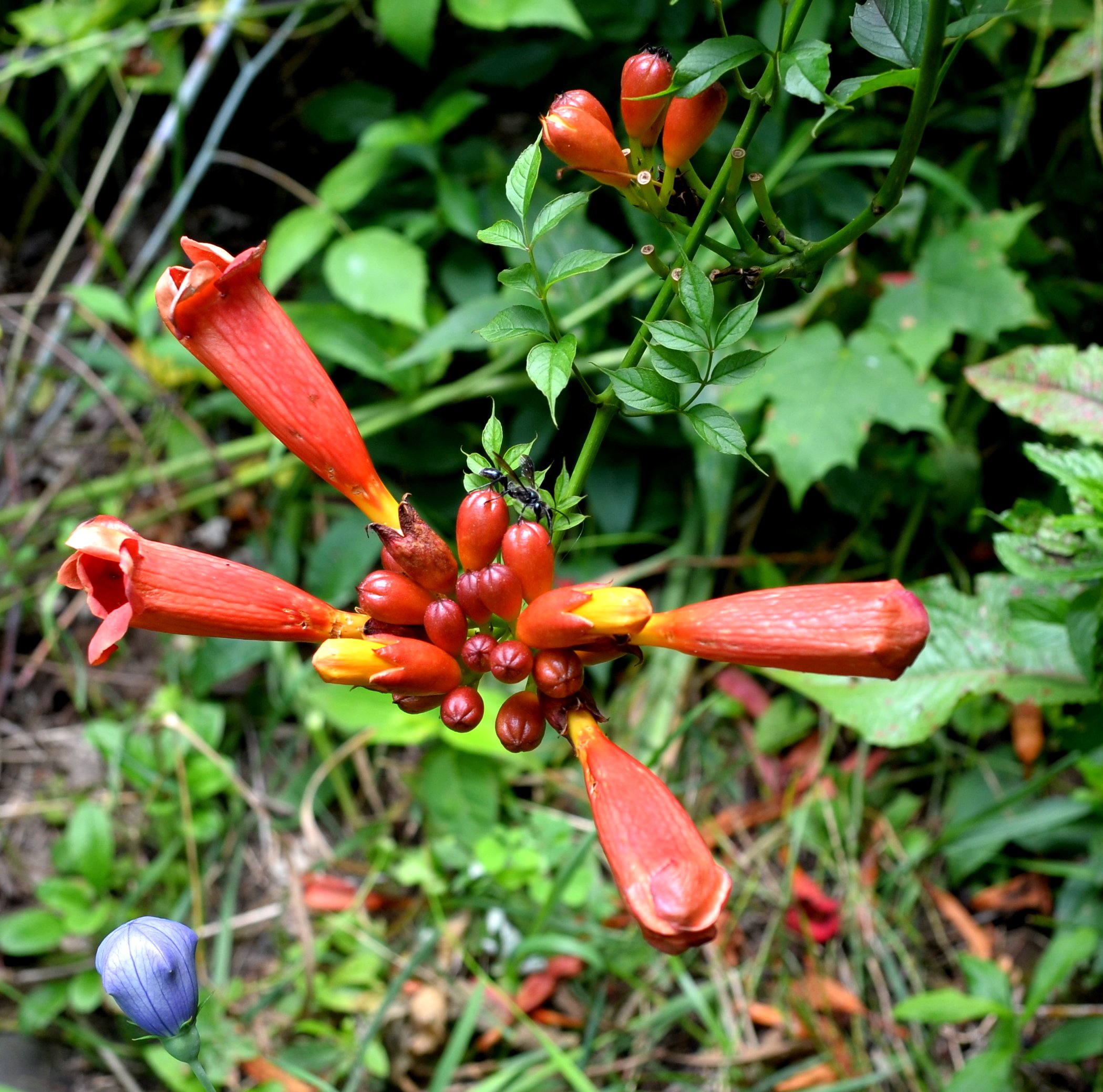
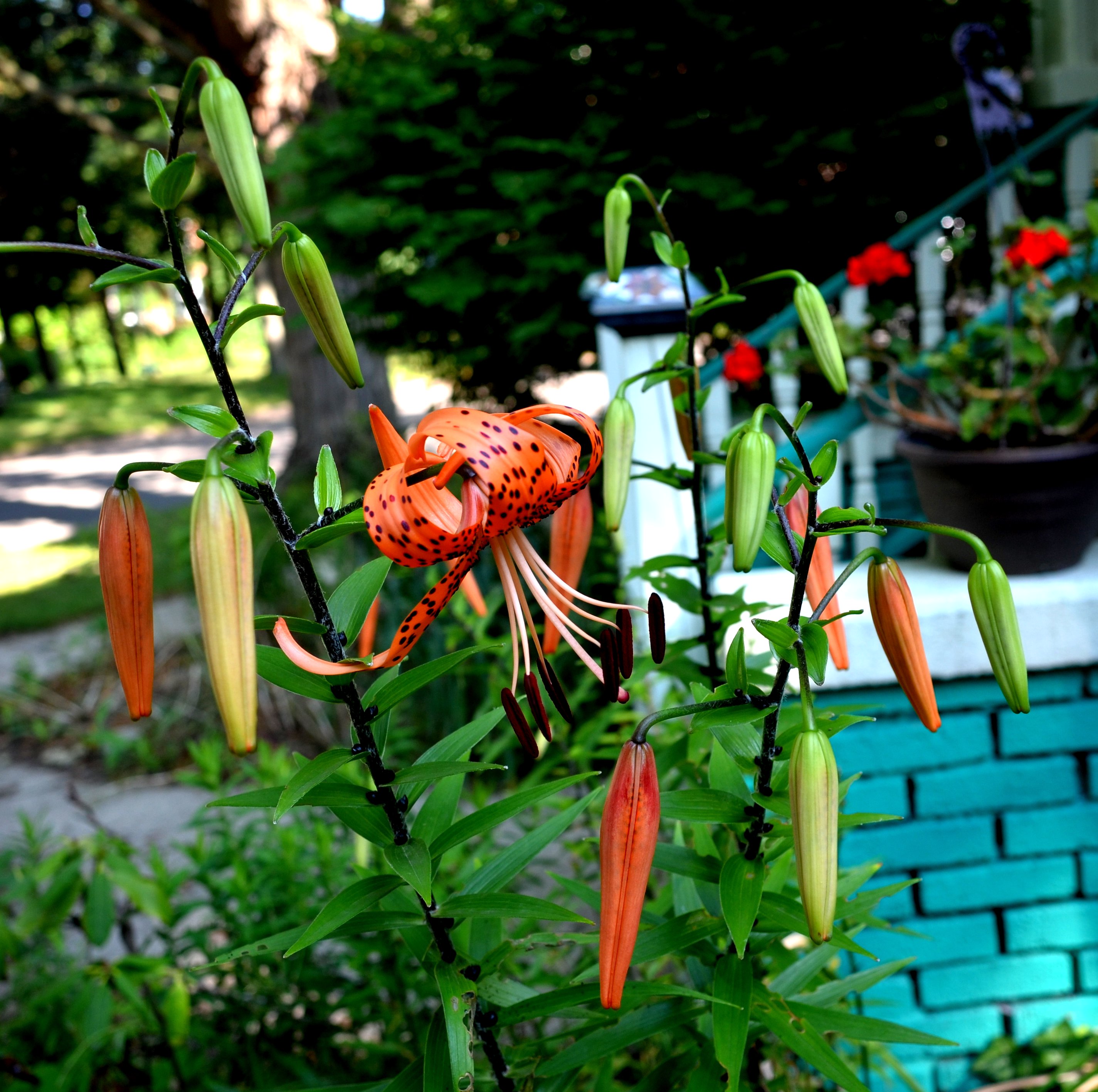
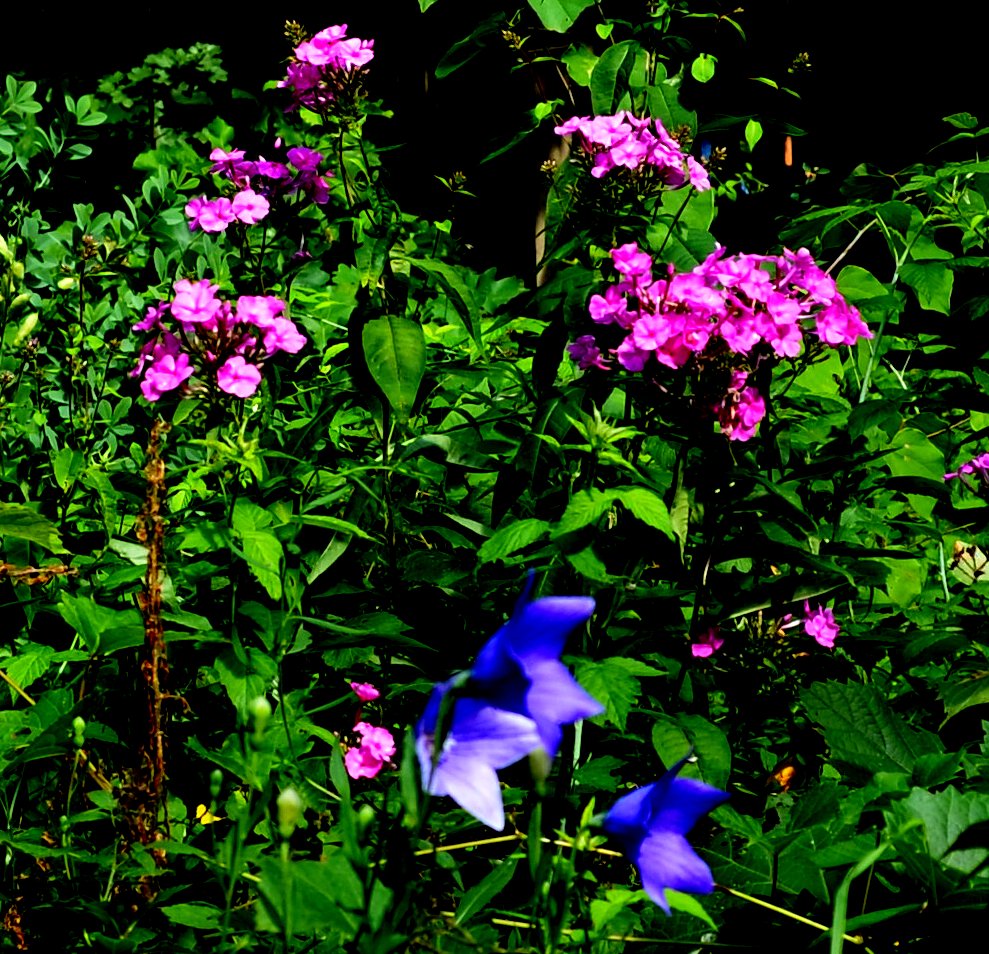
Please enjoy your rest time if you have any. I seem to be saying "yes" more and more, signing petitions more and more, etc. Our internet is buzzing with political and charitable organizations hoping I have that last penny. So I come out here to talk to people and of course the bugs. Take care,
Love, Martha
Back to July 16, 2017
Forward to July 30, 2017
Back to 2017 menu
Back to main menu
copyright Martha O'Kennon 2017































 7 13 17 1a.jpg)




















































.jpg)













